Please enter at least 3 characters
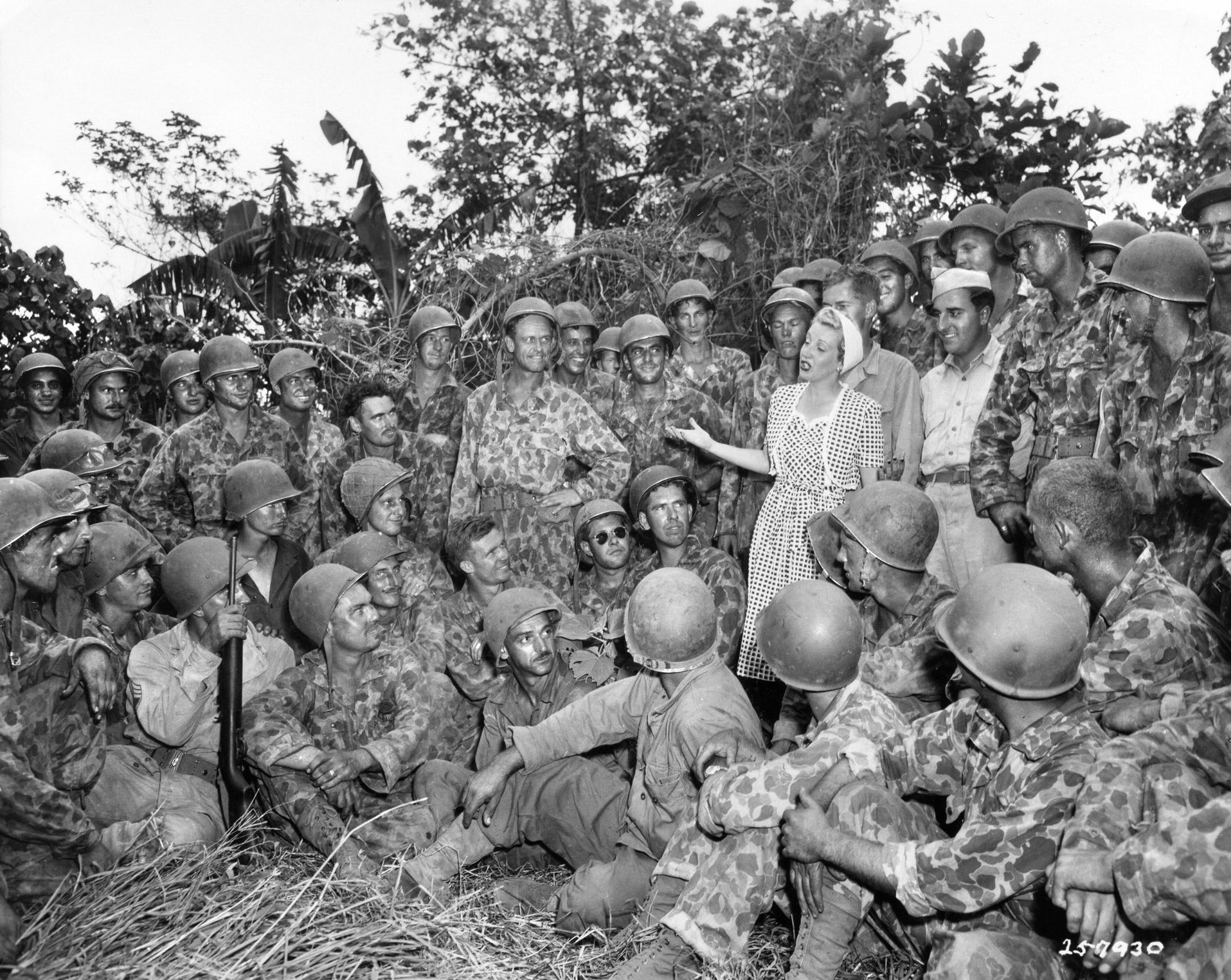

The USO Turns 75: American soldiers’ “Home Away From Home”
During WWII, the unique civilian organization did much to boost the morale of soldiers at home and abroad.
This article appears in: Spring 2017
By John Provan
Almost every American veteran has fond memories of a Track-Side Free Canteen, or a USO center at some train station or airport situated at locations around the world, or a “USO Camp Show” that provided entertainment close to the front lines, during every conflict since World War II.
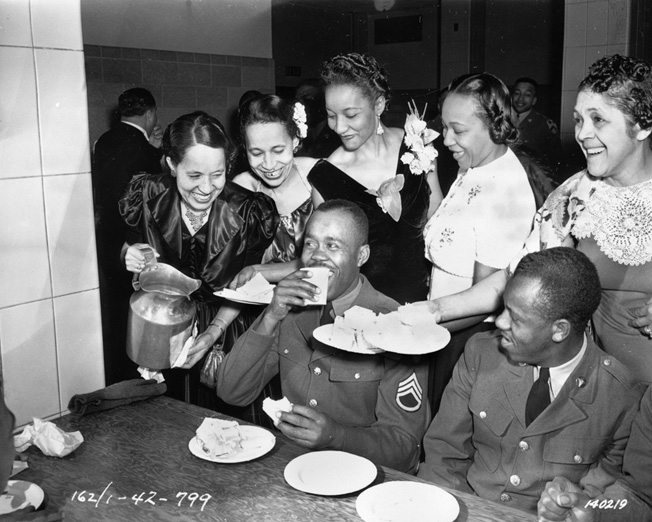
The letters “USO” (United Service Organizations) often meant a pretty young lady who served a cup of hot coffee, and maybe a doughnut with a smile or a well-known Hollywood actor or musical performer who provided the soldiers with an hour of joy and relief from months of fighting on some far-flung battlefront.
The USO had its earliest roots during the days of the American Civil War, where some 7,000 Ladies Aid Societies provided help as needed to soldiers of both sides.
Another predecessor of the USO, the YMCA, which began in 1856, placed books on ships for sailors to read. During World War I, some 28 organizations, including the YWCA, Young Men’s Hebrew Association, the Jewish-Welfare Board, the American Library Association, the Knights of Columbus, the National Catholic War Council, and the Salvation Army all attempted to help our soldiers during the trench fighting in France. More than 125 volunteers were wounded or gassed, three dying later from their injuries, while eight volunteers (including two women) were killed in action while providing services to American soldiers.
World War I demonstrated that a single organization could function better than multiple smaller groups. Even before the outbreak of World War II, the U.S. military realized the mammoth task that was about to unfold. During the early months of 1938, these various organizations came together to coordinate their funds, manpower, and resources.
The Creation of the USO
The USO was officially created on February 4, 1941, with one of the first centers opening on May 28 at the Charleston Navy Yard. During the war, almost every town in the United States set up a USO center—there were more than 3,000 in all, staffed by 1.5 million volunteers. They provided soldiers a place to eat, write a letter back home, play games, or simply relax.
Approximately 300 prefabricated wooden clubhouses were erected by the U.S. government, with the first being completed by November 28, 1941. These centers were badly needed where local communities lacked public facilities to accommodate soldiers, sailors, and airmen stationed nearby.
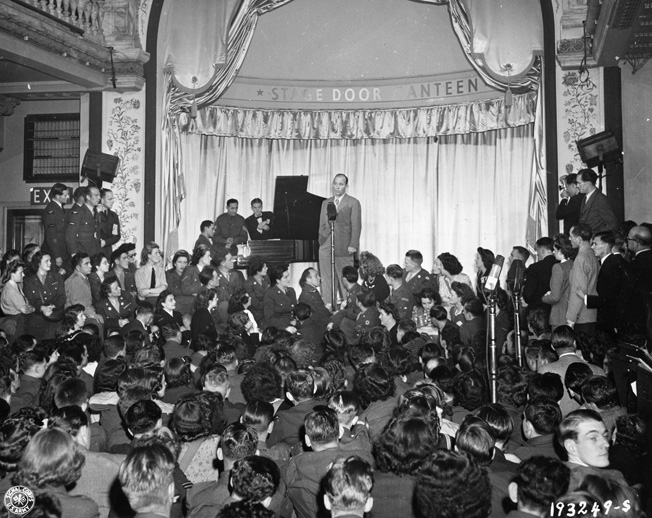
There were 125 Track-Side Free Canteens that provided a free meal to millions of soldiers crossing the country by train. In three years, the canteen in Danville, Illinois, (population 37,000) alone had served some 489,664 sandwiches. This generosity was all the more remarkable, considering that most food items were rationed and in short supply to civilians during the war.
The USO also established Traveler’s Aid—often just a simple desk in a waiting room at a bus depot or railroad station. The volunteers gave soldiers lodging information, local transportation, sightseeing tours, or provided emergency aid when needed.
Because the military was then racially segregated, local state laws forced the establishment of 116 USO centers that were specially run for black soldiers. It is believed that no soldier of any color was ever turned away from a USO center during World War II. It appears that the majority of soldiers realized the situation and normally visited the “appropriate” centers, although this was far more difficult in the southern states.
Canteens, Clubs, and Camp Shows
The USO in New York and Hollywood established “canteens” where servicemen and women could drop in for live entertainment, coffee, soft drinks, and a simple meal. Other canteens were opened in major cities such as Boston, Philadelphia, Cleveland, San Francisco, and even London. It was not usual to see some of the biggest names in entertainment mixing with the troops, serving them snacks, and even cleaning up after the night was over. Two movies, Stage Door Canteen and Hollywood Canteen, were produced in 1943 and 1944, respectively, that highlighted the importance of these clubs.
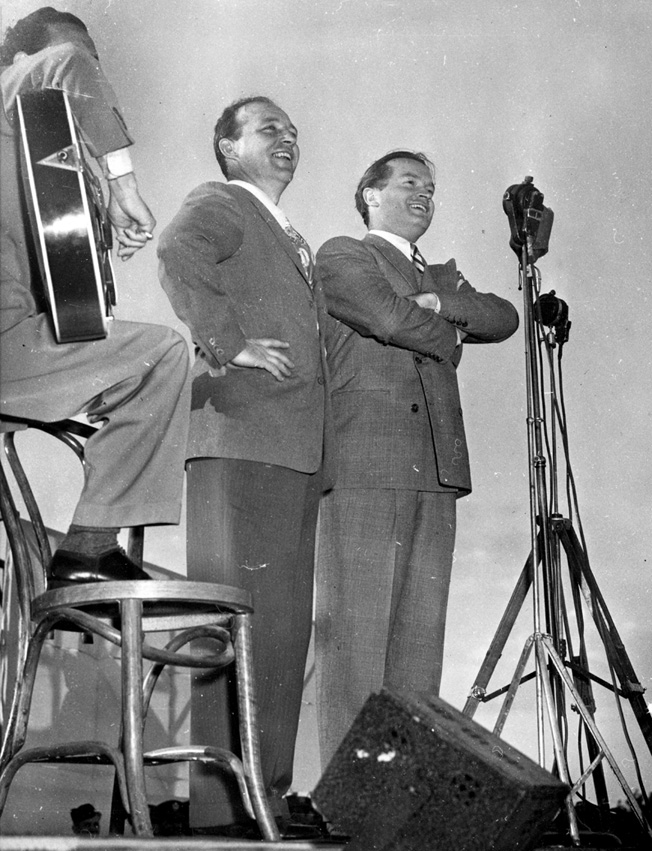
Between 1942 and 1947, the YMCA ran many USO Clubs that were visited by 460 million soldiers. The USO underscores the concept of “patriotism,” a word that most Americans understand, believe in, and support—especially when American servicemen and women are fighting a war. The act of volunteering is an example of the individual sacrificing for the greater good or the war effort.
The USO Camp Shows featured some of the biggest names in Hollywood entertainment. They conducted some 428,521 performances in 208,000 separate locations around the world. Almost every star volunteered, including Bing Crosby, Judy Garland, Orson Welles, Red Skelton, Martha Raye, the Andrews Sisters, and Tommy Dorsey. Many performed without pay, and they were all heroes in their own way.
Bill Johnson, for example, a well-known jazz musician of the day, had been turned down by the draft because of a medical condition, so he offered his services to the USO Camp Shows. Over the following years he did numerous tours, maintaining a rugged schedule, enduring the same hardships, little sleep, and irregular meals as the soldiers; but he performed his heart out at every concert.
These performers were never told ahead of time where they were going; their movements were kept secret even from the soldiers to provide some security. Entertaining the troops was not without its hazards. During World War II, 37 USO Camp Show members, mainly entertainers, were killed in the line of duty. The loss of a big-name entertainer (such as band leader Major Glenn Miller, who went missing during a flight in December 1944) was just as damaging to morale as a battle lost.
The USO Camp Shows went to great lengths to serve; one tour group of four female entertainers—Jo Andrews, Nancy Healy, Margie Liszt, and Julie Lane—traveled by dog sled to a remote post in Alaska and gave a special performance especially for the four lonely GIs stationed there. The four entertainers then went on to provide these men with a home-cooked meal. This troupe went on to do 830 shows.
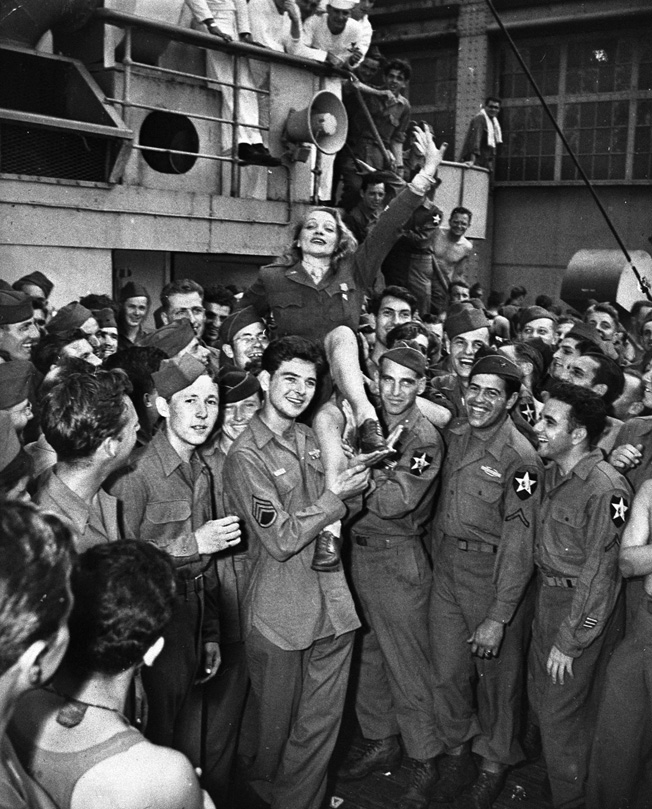
Many of these Camp Shows were broadcast over the Armed Forces Network. AFN disk jockey (and movie star) Mickey Rooney often entertained the soldiers as an impromptu addition to a USO Camp Show.
Bob Hope exemplified such commitment to our soldiers, having performed during almost every Christmas season between 1944 and 1991, and becoming one of the most well-respected stars of America.
The current issue of the USO’s magazine On Patrol, notes that “Hope and his band of entertainers and crew … had an incredibly close call during a tour stop in Palermo [Sicily], where German bombers destroyed the docks and buildings in the area around their hotel…. The close call didn’t deter him. Hope took a USO circuit out to the Pacific Theater the following year.”
And who does not remember the legendary German-born singer and actress Marlene Dietrich, who did several tours in 1944 and 1945. At one location, Ms. Dietrich met General George S. Patton, Jr., and said, “I’m not afraid of dying, General, but I am afraid of being taken prisoner…. If they catch me … they’ll shave off my hair, stone me, and have horses drag me through the streets.”
Patton smiled and pulled out a revolver. “Here, shoot rather than surrender! It’s small but it’s effective.” Ms. Dietrich would carry that weapon with her for the rest of the war. Years later, while performing in Las Vegas, Ms. Dietrich made a point of inviting veterans to her dressing room after her shows to talk about their experiences in World War II.
Entertainment in the Hospitals
The soldiers appreciated any entertainer, especially when they came to the hospitals. One such entertainer, June Andrews, recalled seeing a paralyzed soldier named Richard, who had not spoken in months. From the fatigue of her tour, she just broke down and began crying. Richard simply said, “Didn’t they tell you not to do that?” Afterward, the two had a long talk and remained in contact for years to come.
In 1944 alone, some 5,400 performances were given for some 850,000 patients at 79 different hospitals. The following year, this figure had increased to 3.3 million patients at 192 hospitals.
After the war ended, the USO went out of business—temporarily. On New Year’s Day 1949, following a directive by President Harry S. Truman, the USO was re-established and continues its work to this day.
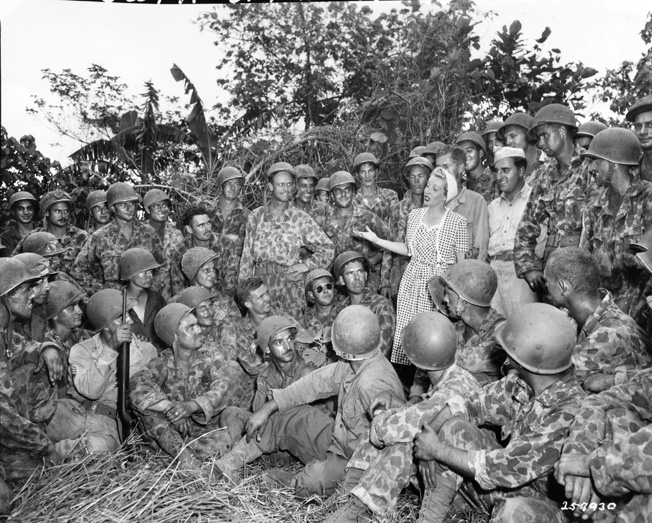
The USO Continues its Mission
Even today, the story of the USO is one of volunteers who give freely of their time to serve our nation’s servicemen and women—to entertain them and give them a “home away from home,” and to help in any way they can. It is also the story of numerous foreign nationals who provide that same smile, out of gratitude, at USO Centers overseas. It is the story of corporate America, donating the funds and locations, so that the USO can provide this support wherever needed.
The USO has repeated its support of American soldiers in every war since World War II, including Korea, Vietnam, Desert Storm, and more recently during the War on Terror. The names of the locations, the volunteers, or the actors and singers may have changed, but the attitude is the same: a genuine desire to help those fighting to protect America’s freedoms and way of life.
The countless volunteers—be they famous individuals or simple folks wanting to make a difference—each provide a feeling of a caring population. Several current volunteers, stand out: Myrtle Feeney, Sybille Eckhardt, Celesete Warner-Heymann, and Helmut Esser, each withmore than 10,000 hours of service. Baking homemade cookies and cakes for wounded soldiers in military hospitals or providing Kool-Aid powder so that the foul-tasting water in the desert is easier to drink, the USO provides.
Editor’s Note: The 75th anniversary of the USO, in February 2016, would seem an appropriate time to reflect upon this unique organization and its accomplishments. The author is presently working on a book and a TV documentary covering that story: The USO—75 Years Helping Our Soldiers.
As an “overseas brat” whose father served the United States for 33 years and attained the rank of chief master sergeant, Dr. Provan, too, has many fond memories of the USO, which has led him to become involved in this project, despite the fact that he presently lives Germany. To date, no film documentary has ever been produced about the USO, although it is a topic that brings back fond memories to so many generations.
For this reason, he is asking American veterans of any war to come forth and tell their memories and experiences about the USO. Perhaps a veteran still has a photo of some USO Center or Camp Show that they attended. And, naturally, if anyone took 8mm home movies, they might make a great addition to the documentary; these can easily be transferred to a DVD.
From soldiers who once entered Germany or fought on a Pacific island to those serving overseas today, Dr. Provan seeks support in thanking the USO and the countless volunteers for all they have done in the past—and will do in the future. Please feel free to contact him via e-mail at: [email protected].
Back to the issue this appears in
Join The Conversation
Leave a reply cancel reply.
You must be logged in to post a comment.
Share This Article
- via= " class="share-btn twitter">
Related Articles
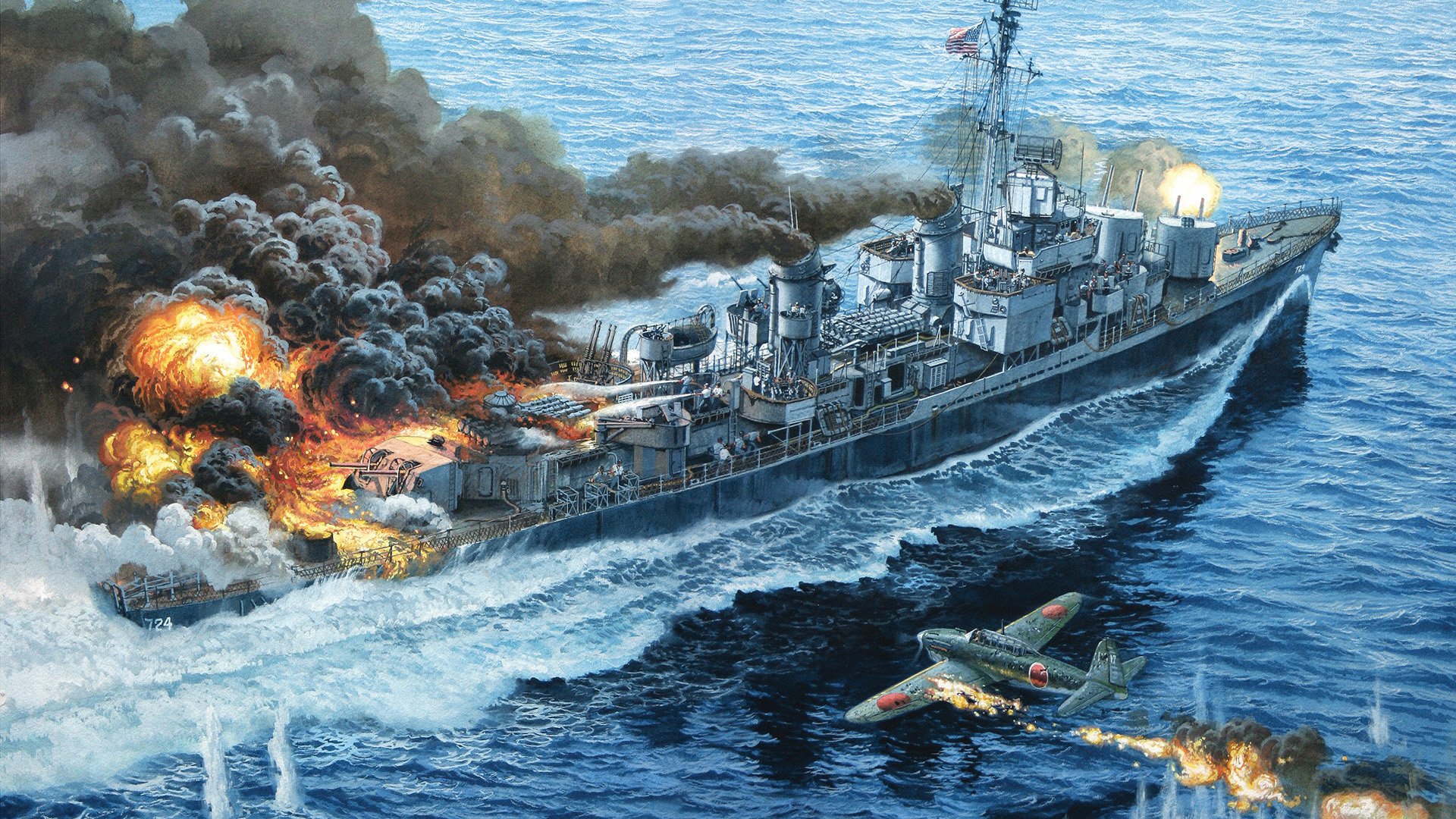
The USS Laffey Survived Waves of Kamikazes Off Okinawa
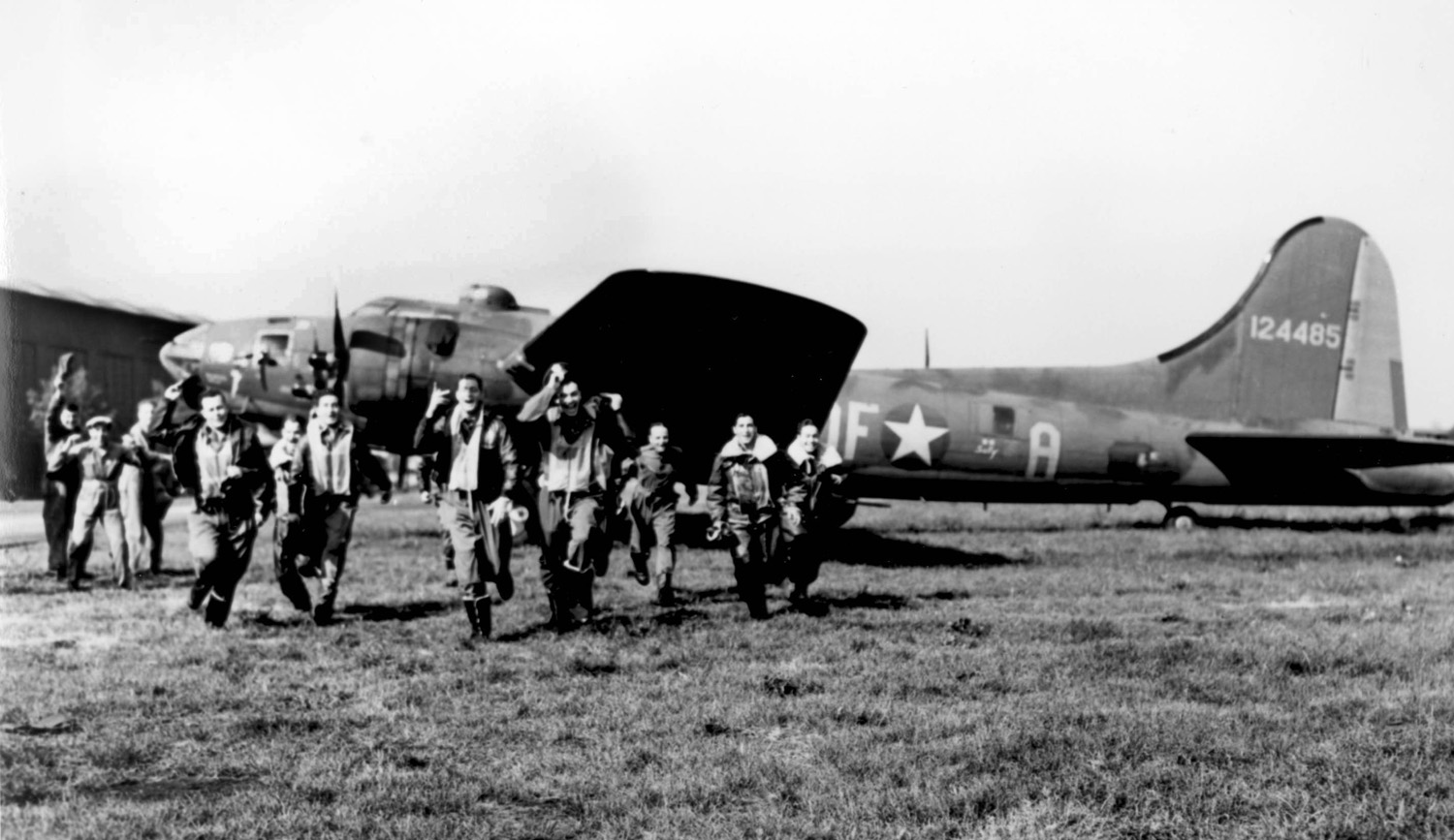
A rugged lady finds a home at Wright-Pac.
General andrei vlasov.
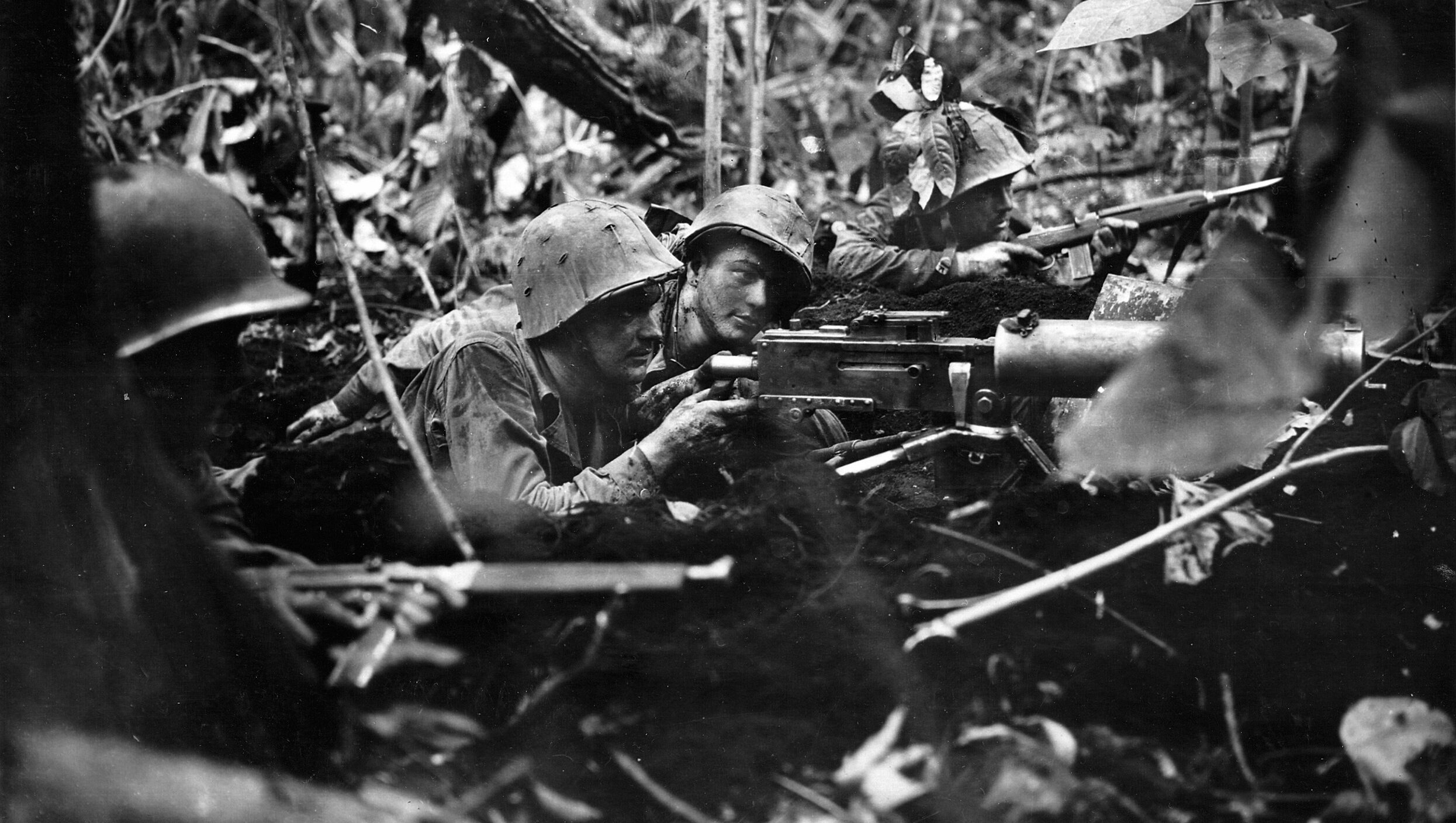
Operation Cartwheel: Seizing the Solomons and Beyond
From around the network.
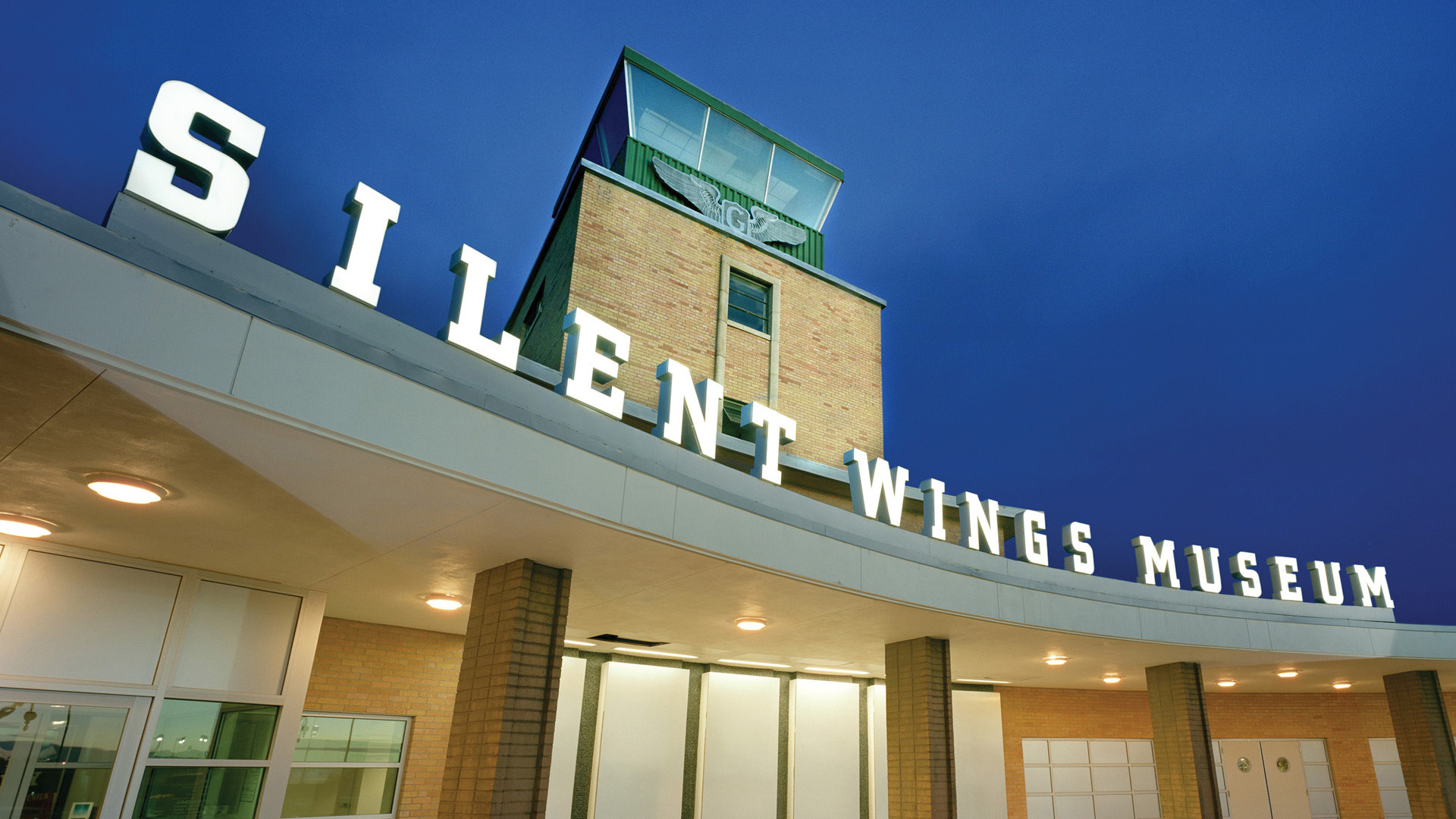
The Silent Wings Museum: Honoring the Glidermen of WWII
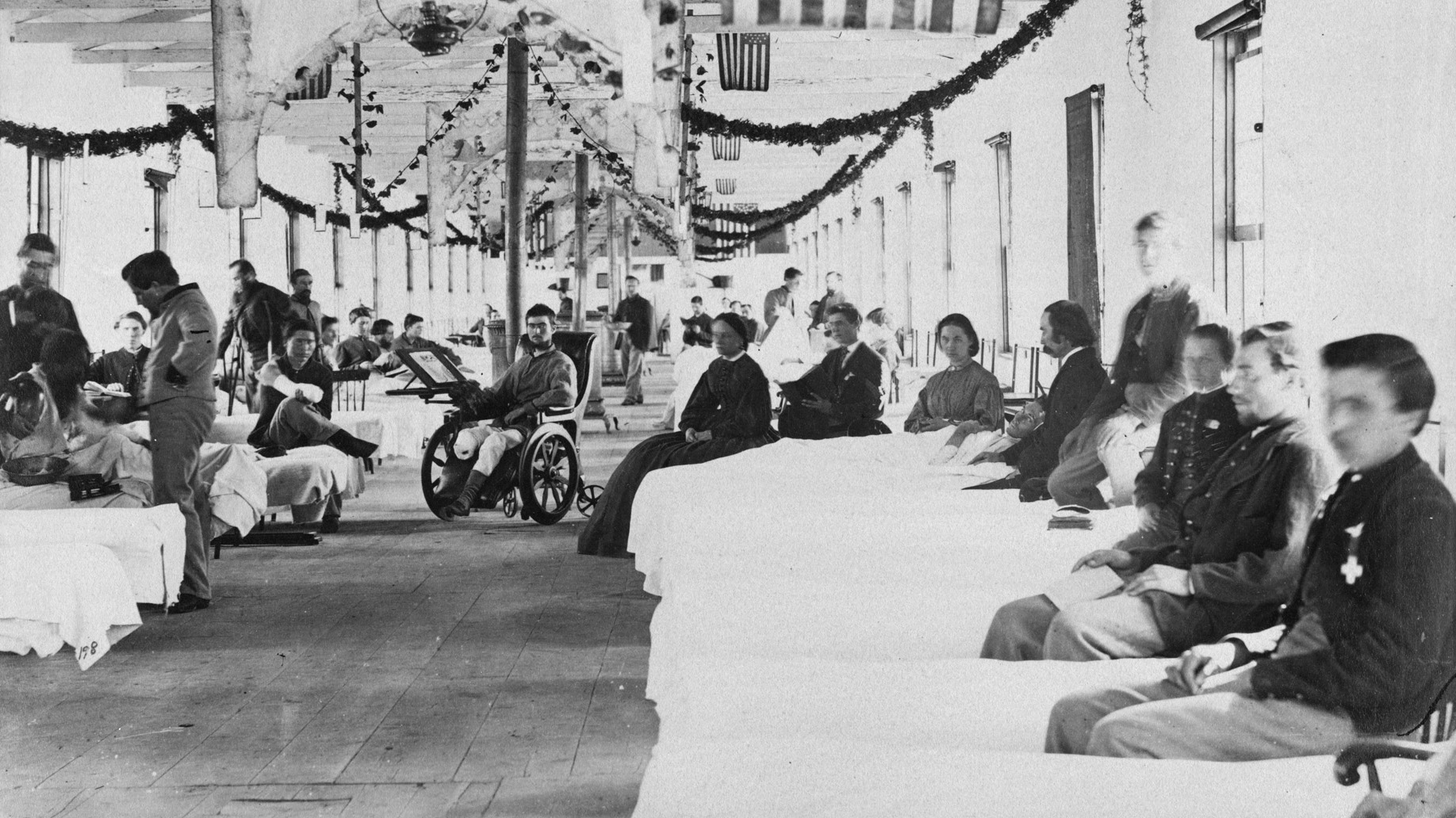
Walt Whitman’s Civil War: Stories of the Wounded
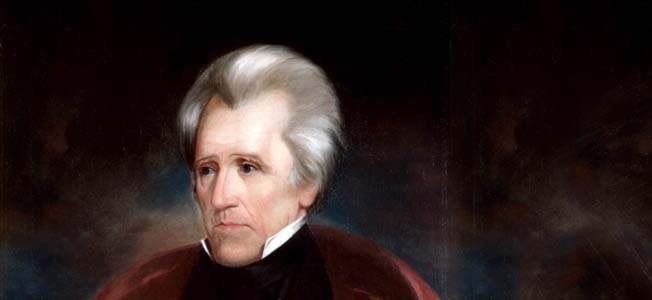
Military History
Andrew “Old Hickory” Jackson (1767-1845)
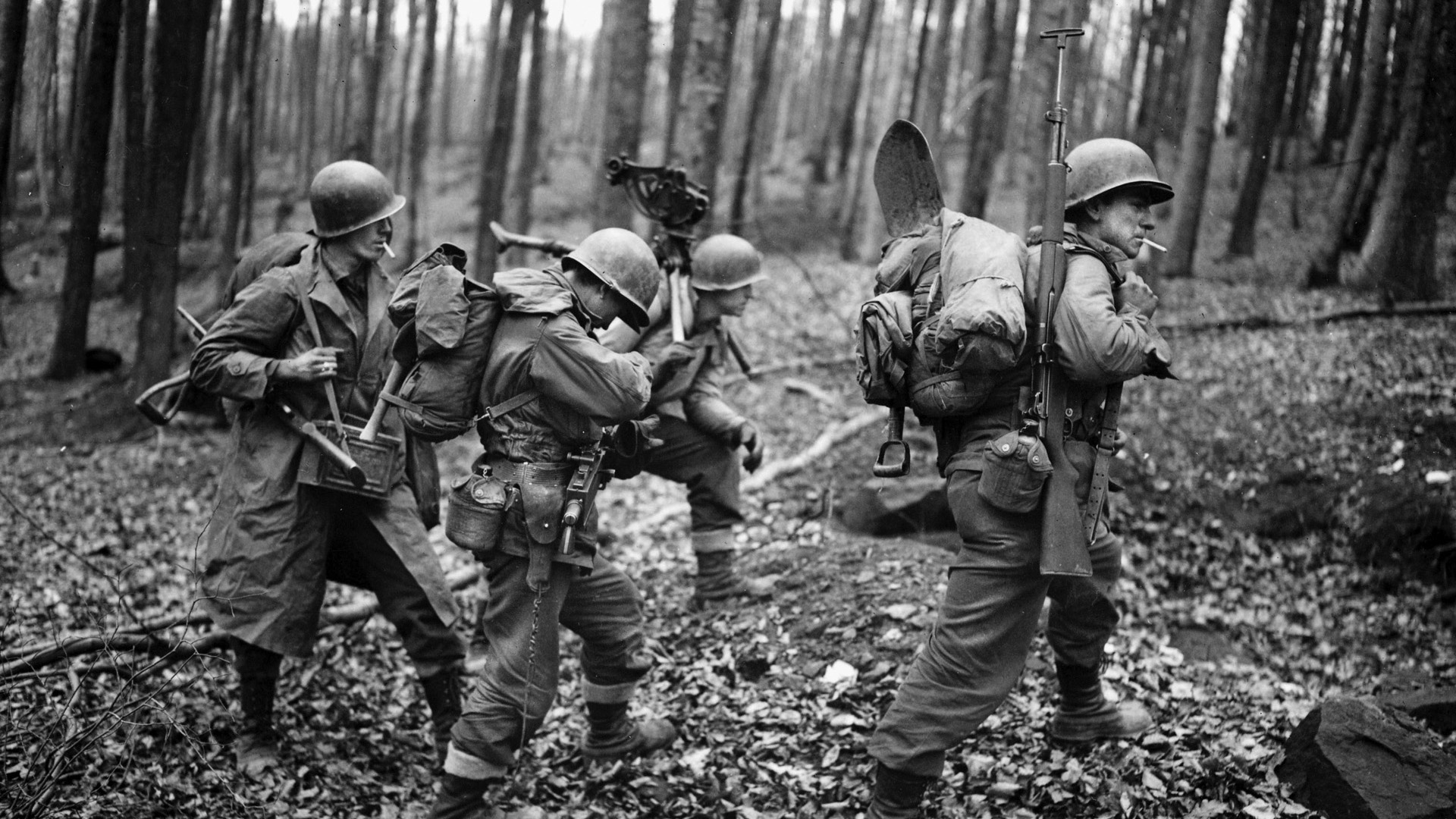
“Love” Company in the Vosges Mountains

Bob Hope’s USO
Bob Hope headlined 57 USO tours, bringing laughter to the lives of U.S. military men and women.
Comedian Bob Hope (1903 – 2003) was one of the best known, most loved, and longest lasting stars in the entertainment business. For six decades, Hope made us laugh in movies, on television, and in print. He was renowned for his longevity (he was 100 years old at the time of his death), his love for golf, and his contributions to charity. But perhaps Hope’s greatest legacy is his work entertaining the troops.
Beginning in 1941 and continuing for half a century, Hope headlined 57 USO tours, bringing laughter to the lives of U.S. military men and women serving in World War II , Korea , Vietnam , the first Gulf War, and beyond. And he was deeply proud of this work. When President Bill Clinton named Hope an honorary veteran in 1997, Hope responded, “I’ve been given many awards in my lifetime — but to be numbered among the men and women I admire most — is the greatest honor I have ever received.”
As we pay tribute to veterans , we take a look at a few highlights of the honorary veteran’s work for the USO.
1944: A World War II show presented “somewhere in the South Pacific”
1957: In Guam and Japan with Jayne Mansfield
1966: Entertaining the troops in Cu Chi, Vietnam on Christmas Day
1984: Christmas in Beirut
1990: One of his final USO tours, with Rosemary Clooney
Legacy Staff
Legacy produces award-winning original content ranging from national news obituaries to features and FAQs on a wide variety of life-and-death topics.
More Stories
O.j. simpson (1947–2024), nfl star, defendant in trial..., ralph puckett jr. (1926–2024), last korean war medal..., cole brings plenty (1996–2024), actor in yellowstone prequel....
Entertainment
In the summer of 1944, the popular comedian and radio personality Bob Hope began yet another of his famous tours of military camps for the United Service Organizations (USO). This particular tour made stops in Hawai’i and on small islands all across the Pacific theater, where Hope and his troupe performed 150 shows in two months. American military personnel loved the shows. Hope’s jokes and silly stunts made them laugh and took their minds away from the war for a few minutes. But the routines had a much larger purpose than simple diversion. In a standard part of the show, Hope introduced the troupe’s youngest member, tap dancer Patty Thomas. “I just want you boys to see what you’re fighting for,” he explained to an audience of cheering and whistling men who were, undoubtedly, far more impressed with Thomas’s slender figure and long legs than with her tap-dancing skills. 1 Yet, that was exactly the point. Thomas wasn’t on the tour simply because she was a talented dancer. She was there to remind the men of women from home. Even Hope wasn’t there simply to make the men laugh. He—and all forms of entertainment in World War II—reminded servicemembers of home, of everything that they had left behind, and of everything that they hoped to return to at the war’s end. Entertainment gave them something to fight for.
Military commanders in all wars throughout history have understood that morale is essential to a force’s willingness to fight and endure hardship. While good morale depends on many things, including good leadership, clear purposes, and good food, entertainment played a crucial role in the morale of American military forces during World War II. 2 Entertainment also served particular purposes for different constituent groups. Of course, entertainment gave servicemembers a break from the stresses and the boredom of war. Radio programs, movie showings, USO shows, and visits from Red Cross women serving donuts all allowed soldiers to think about something besides the war, to relax, and even to laugh. Military officials relied on many forms of entertainment, along with other forms of recreation and religious services, to divert soldiers’ attention from vices that could result in illness or from any activities that might get them into trouble in local communities. In particular, commanders hoped that wholesome activities would distract men from alcohol and prostitution. Community leaders in areas near military bases often appreciated this effort and frequently helped to steer men toward USO clubs or other activities and away from local women and saloons.
Organizing Morale
In the months before the United States entered the war, army officials began to centralize what had previously been a haphazard effort to provide recreation and entertainment for soldiers. During World War I, the military relied on various religious and civic groups to organize morale work, and while their efforts had been appreciated, they had often overlapped and proven difficult to coordinate. As army leaders began to mobilize in the early 1940s for a seemingly inevitable war, they hoped to avoid a similar bureaucratic mess, and organized entertainment and recreation work under the Special Services Division (originally called the Morale Branch).
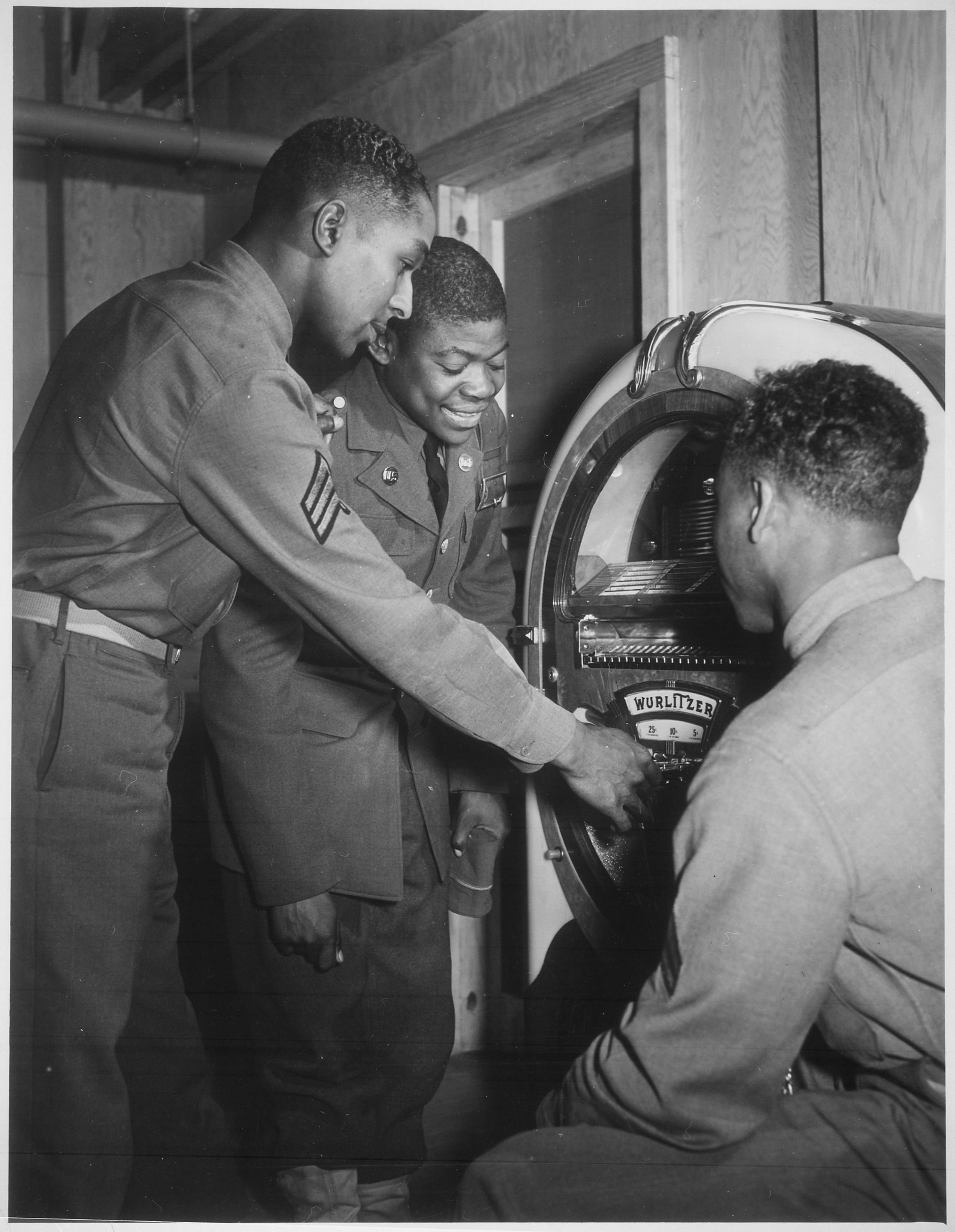
Soldiers listening to a jukebox, n.d. Courtesy of NARA, 208-LU-35CC-4, NAID 535751 .
Special Services managed the Army Exchange System (better known as the PX), provided first-run Hollywood movies to be shown in camp theaters, organized a rapidly growing radio network that featured popular music and informational programs, published Yank magazine (with a worldwide circulation of 2.5 million copies), distributed tobacco and candy to soldiers under fire, organized athletics programs, and operated clubs where soldiers could purchase food, read American newspapers and magazines, play games, and dance with girls from home. The military revived the GI newspaper Stars and Stripes , created in the earlier world war as a newspaper by and for enlisted soldiers. Armed Forces Radio Service produced and distributed live audience programs in coordination with network studios in New York and Hollywood, musical variety shows such as the popular “Command Performance” and “Mail Call,” and several programs hosted by disk jockeys, including “GI Jive” and “Yank Swing Session.” Several programs featured specific musical styles, while others were designed to appeal to particular racial and ethnic groups. “Jubilee,” for example, targeted African Americans, while “Viva America” targeted Latin American and Spanish-speaking soldiers.
Special Services also worked to ensure that GIs could produce their own entertainment. GIs staged and starred in Soldier Shows, a wide range of variety shows, plays, and musical performances, using scripts and song lyrics distributed by Special Services. The most famous Soldier Show, This is the Army , ran on Broadway before General Dwight D. Eisenhower sent the cast of 165 members on a worldwide tour that ultimately raised ten million dollars for relief. 3
Home away from Home
Initially, many army officials had hoped to manage all aspects of soldiers’ entertainment themselves. But in 1941, President Franklin D. Roosevelt insisted that civilian organizations be permitted to supplement the military’s efforts to entertain servicemembers. Partly, the military needed the help, especially when the United States began deploying troops to all corners of the world. But, for Roosevelt and many civilian leaders, this military-civilian connection was essential to keeping civilian ideals and values in the minds of military personnel. They envisioned civilian organizations like the USO and the Red Cross as representatives of a concerned American public, as essential civilian influences for men who enlisted or had been drafted for the war’s duration.
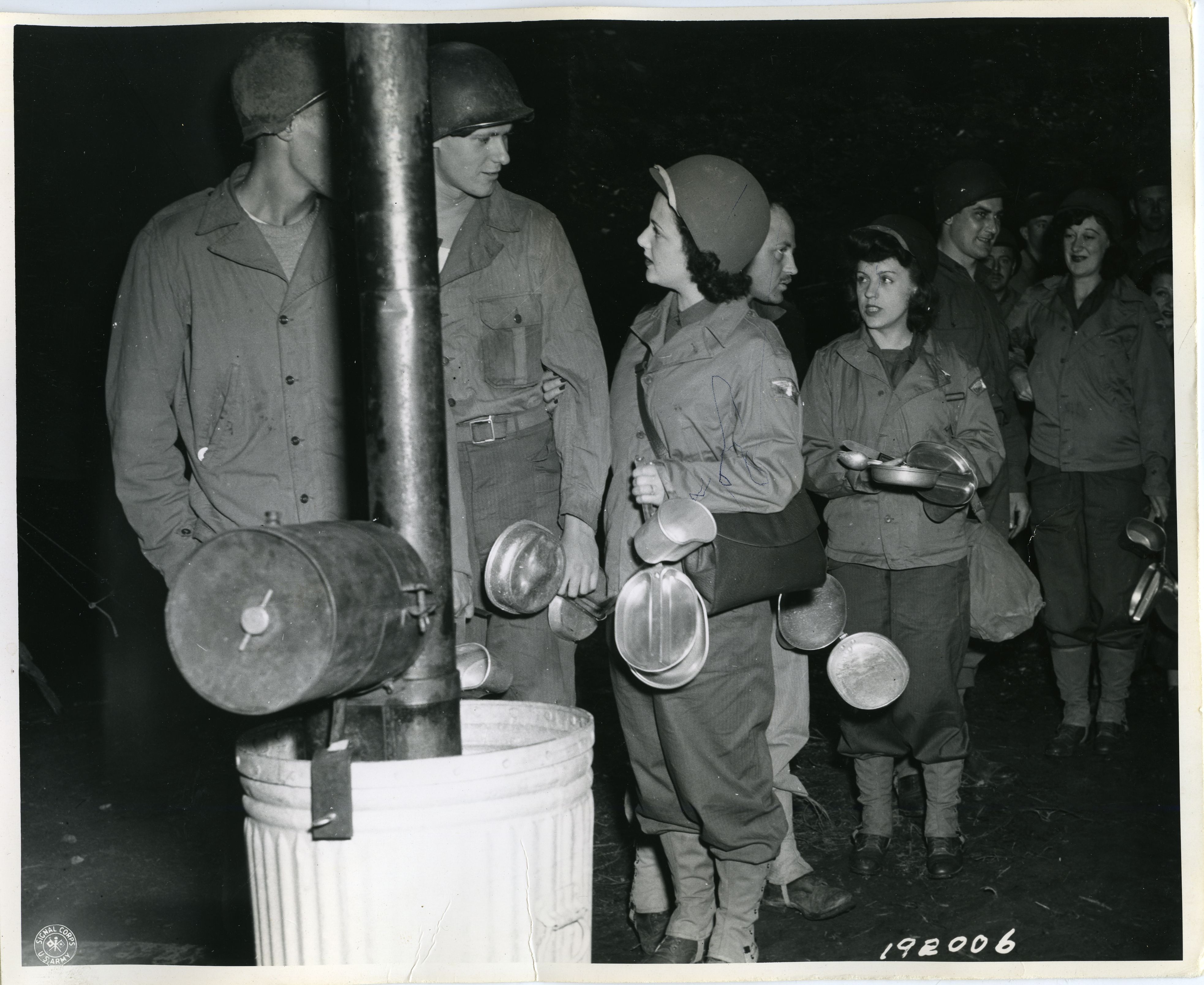
"These USO girls eat with some of the men they help entertain. Photo, taken somewhere in France, shows Miss Marian Page, Eastbourne, Sussex, England; Cpl. Robert Buxton, 1505 West Oreland Avenue, Cuyahoga Falls, Ohio, and Miss Mary Carnevale, 123 Spring Street, Lodi, N.J., lined up, awaiting mess," 25 July 1944, U.S. Army Signal Corps. Courtesy of NARA, 111-SC-192006, NAID 176888112 .
Military entertainment thus linked the military and the homefront in important ways, while providing an outlet for many Americans to contribute time and talent to the war effort. The USO insisted that military life could be demoralizing and disruptive for temporary citizen-soldiers, and acknowledged public concerns about the long-term consequences of militarization. Given these fears, USO leaders argued that the organization would provide “a wholesome atmosphere, the companionship of fine women and girls, recreations that are normal and influences that will keep [servicemen] clean, and worthy.” 4 USO clubs were not merely places to spend some free time. They were a “home away from home.” Women played essential parts in entertainment’s function as a reminder of home. Women “working alongside” soldiers and sailors, one Red Cross worker explained, served as a “small but important point of contact between those men and the women they left at home” and would help the men “readjust themselves to civilian life.” 5
Dancing & Donuts
The USO formed in 1941, merging the work of the Salvation Army, Young Men’s Christian Association, Young Women’s Christian Association, National Catholic Community Services, National Travelers Aid Association, and the National Jewish Welfare Board. Domestically, the USO sponsored more than three thousand clubs located near domestic military camps and in urban areas where servicemembers could find free coffee and doughnuts, a place to write home or see a movie, play games, listen to the radio, play records on the phonograph, and—most popularly—a place to dance with young women. Although some USO clubs were racially integrated, and although the USO insisted that it did not discriminate, most clubs were racially segregated, with around three hundred clubs catering specifically to African Americans. The vast majority of military personnel visited USO clubs, and among them, more than eight in ten insisted that the clubs were “absolutely necessary” or “of great importance” (Survey 72, Q.25) .

Army and Navy USO in downtown Honolulu, 6 Feb. 1945. Courtesy of NARA, 111-SC-347375, NAID 176250386 .
The USO’s Camp Shows program dispatched live entertainment to military camps in the United States and to all of the war’s theaters. More than seven thousand performers staged over 428,000 shows throughout the war and immediate postwar years, many of them traveling abroad on what the USO called the Foxhole Circuit. Most Americans knew of famous performers like Marlene Dietrich, Humphrey Bogart, Lena Horne, and Judy Garland, who volunteered to tour for the military. But the vast majority of performers—98 percent of them—were unknown, amateur singers, dancers, and performers who wanted to contribute their talents to the war effort and hoped that their wartime exposure might ultimately boost their careers. Servicemembers were far more likely to see a troupe of six or seven performers who combined their talents into a show that featured singing, acrobatics, jokes, music, and perhaps even a ventriloquist show, than they were to see a famous actor or musician who stole the headlines.
The Red Cross also provided a significant portion of military entertainment in the war zones. At the height of its wartime operations, the Red Cross ran nearly one thousand clubs on and near military camps in all of the war’s theaters. Similar to USO clubs in the United States, young American women operated Red Cross clubs. Clubs featured snack bars, places to relax with newspapers from home, games, musical equipment, and a host of scheduled activities. Some of the larger clubs opened in requisitioned hotels and provided overnight accommodations, laundries, and barbershops. The famous Rainbow Corner Club in London could serve up to 60,000 meals in a single 24-hour period. To reach men who could not leave the front and men in isolated areas, the Red Cross operated more than 300 Clubmobiles, converted Jeeps and buses equipped with coffee and donut machines. Operated, and often driven, by American women, Clubmobiles were a big hit with the men who flocked to them—eager for donuts and coffee to be sure, but mostly eager for a glimpse of young women from home.

"Mighty Proud to Serve You"; reverse side of postcard, "American Red Cross Clubmobile staffed by American Girls bring hot coffee and doughnuts to U. S. Forces overseas," c. 1945. Courtesy of Smithsonian National Museum of African American History and Culture, Object No. 2010.36.5.36 .
In the years after World War II, the military gradually assumed more control of entertainment. Special Services clubs slowly replaced Red Cross clubs and visits by Red Cross women to the field, leaving the organization to focus on relief and assistance to military personnel. The USO continues to provide a wide range of services for military families, but it eventually focused its entertainment efforts on celebrity tours, leaving the Armed Forces Professional Entertainment Office to coordinate tours of amateur and lesser-known talent. Even with these changes, the mix of military- and civilian-provided entertainment established during the war remained in the years to come.
Kara Dixon Vuic Texas Christian University
Further Reading
Kara Dixon Vuic, The Girls Next Door: Bringing the Home Front to the Front Lines (Harvard University Press, 2019).
James J. Cooke, Chewing Gum, Candy Bars, and Beer: The Army PX in World War II (University of Missouri Press, 2009).
Meghan K. Winchell, Good Girls, Good Food, Good Fun: The Story of USO Hostesses during World War II (University of North Carolina Press, 2008).
Select Surveys & Publications
S-63: Morale and AWOL Study S-72: USO Clubs S-189: Radio Study S-227: Radio Study What the Soldier Thinks , no. 11 (January 1945)
- Kim Guise, “Patty Thomas: ‘What You are Fighting For,’” April 8, 2020, National World War II Museum (accessed August 13, 2020).
- Robert Westbrook argues that Americans were motivated more by personal obligations than by political obligations. In that respect, entertainment and its connections to home played perhaps a more significant role in maintaining morale among the US military than among other combatants. See Why We Fought: Forging American Obligations in World War II (Washington, D.C.: Smithsonian Press, 2004).
- Lowell Matson, “Theatre for the Armed Forces in World War II,” Educational Theatre Journal 6, no. 1 (1954): 1-11.
- “To New York City Parents and Neighbors” pamphlet, 4-5, JDR Jr. Address, July 8, 1941, Series P Welfare-General, RG 2 OMR, RFA, Rockefeller Archive Center.
- Eleanor (Bumpy) Stevenson with Pete Martin, “I Knew Your Soldier” Saturday Evening Post , October 28, 1944, 70.
SUGGESTED CITATION: Vuic, Kara Dixon. “Entertainment.” The American Soldier in World War II . Edited by Edward J.K. Gitre. Virginia Tech, 2021. https://americansoldierww2.org/topics/entertainment. Accessed [ date ].
COVER IMAGE: “Soldiers listening to a jukebox,” 1942. Exhibit Section, Picture Division, News and Features Bureau, New York Office, Overseas Operations Branch, Bureau of Special Services, Office of War Information. Courtesy of NARA, 208-LU-35CC-4, NAID 535751 .

Skip to Main Content of WWII
Patty thomas: "what you are fighting for".
Dancer Patty Thomas was often showcased by her boss and troupe leader Bob Hope as a living embodiment of what American troops were fighting for. Thomas brought levity and youthful femininity to the staging areas of the harshest fighting in the Pacific.
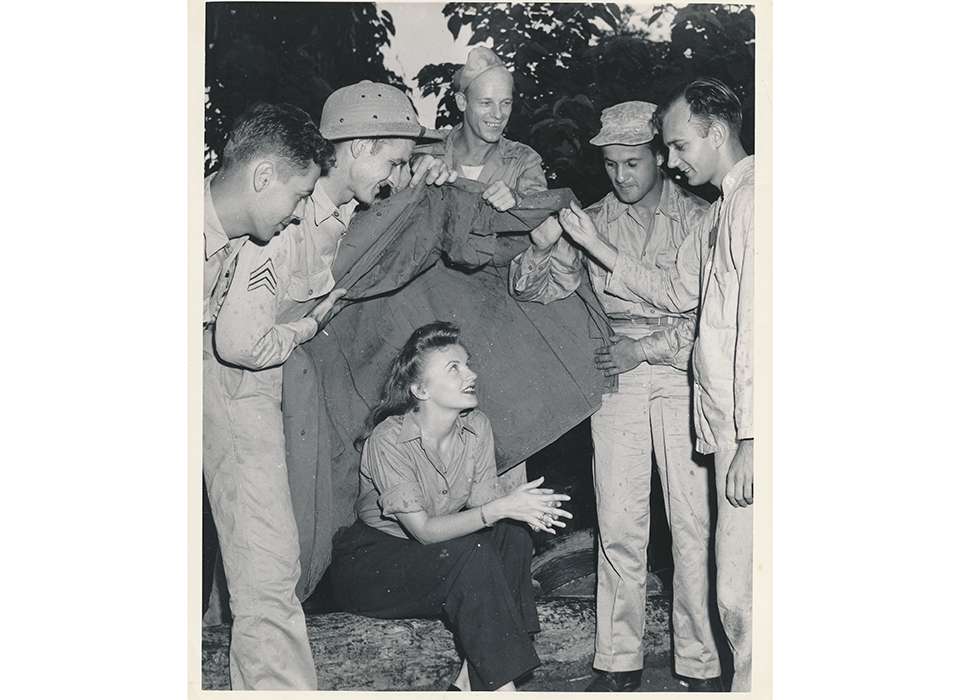
In 1944, Bob Hope’s troupe of entertainers gained a new member, Patricia Thomas. Hope had seen Thomas, a tap dancer, perform in Hollywood and invited her to join his traveling troupe. At the time, Hope was such a big star and Thomas was such a young performer that she initially didn’t trust his invitation. After a meeting with Hope at Paramount Studios, she knew he was serious about her becoming one of “Hope’s Gypsies,” his name for his traveling troupe. The troupe consisted of Bob Hope, star and the group’s leader; Jerry Colonna, mustachioed trombonist and comedian; guitarist Tony Romano; writer and vaudevillian Barney Dean; and the troupe’s other female performer, vocalist Frances Langford. The addition of Thomas, a tap dancer, brought another talent altogether.
Thomas was born August 1, 1922 in Erie, Pennsylvania, but she and her mother moved to California shortly after her father died when Thomas was still young. She was 16 when she started dancing with her teacher and manager, Al Ross, who set her on a training regimen of three-four hours of practice every day. Hard work and dedication like this would pay off on her first adventure traveling with Hope.
From July 10-August 31, 1944, the group embarked on an epic USO Camp Shows tour of the Pacific Islands to entertain American servicemen and women. The group staged around 150 shows in the two months they were on the road. Patty Thomas was by far the youngest member of the ensemble. While underway, on August 1, Thomas celebrated her 22nd birthday on Green Island, off modern-day Papua New Guinea.
For her set, tap dancer Thomas traveled with a tap board that was laid down on the stage for her steps. She had performed for audiences before, but never ones as large as the crowds she would see in the Pacific. Guys would cover fields and hillsides, climb trees or anything else available, and would wait hours outdoors, in blazing sun or in pouring rain to get a glimpse of the entertainers. One of their first performances of the tour was at the Nimitz Bowl, the huge arena in Hawaii. Before the performance, Hope turned to Patty backstage and asked "All these people, what do you think?" She replied, "Oh Bob, they're never going to hear my taps." He said, "Don't worry, I'll take care of it, just go out there and dance." For Patty’s entire performance, Hope followed her around the stage with a microphone so the troops would be able to hear her footwork. Even though she was so young, she (and the others) trusted their boss completely. Hope always made his troupe feel comfortable.
Photographs Courtesy of the Bob & Dolores Hope Foundation
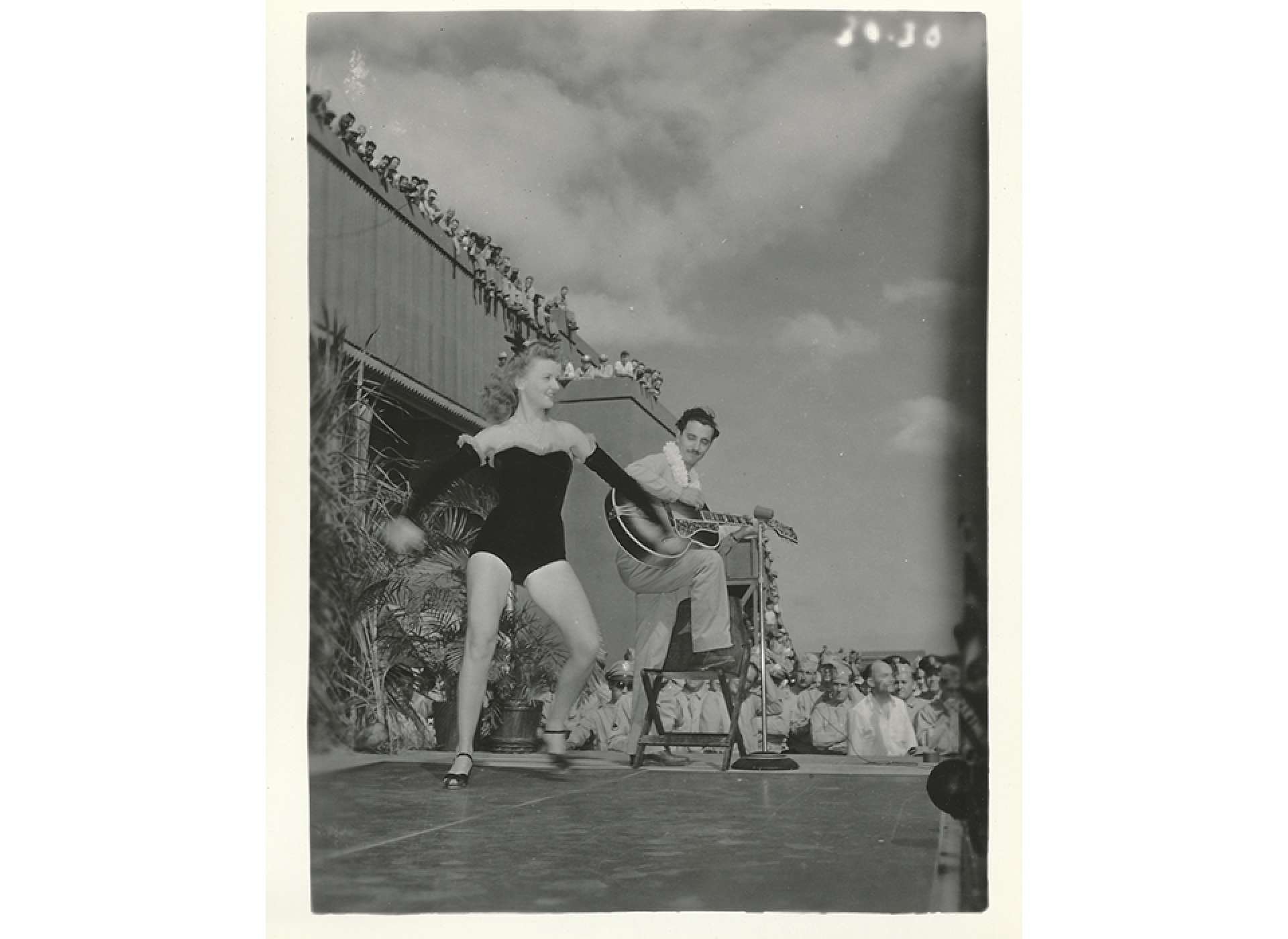
Hawaii, 1944
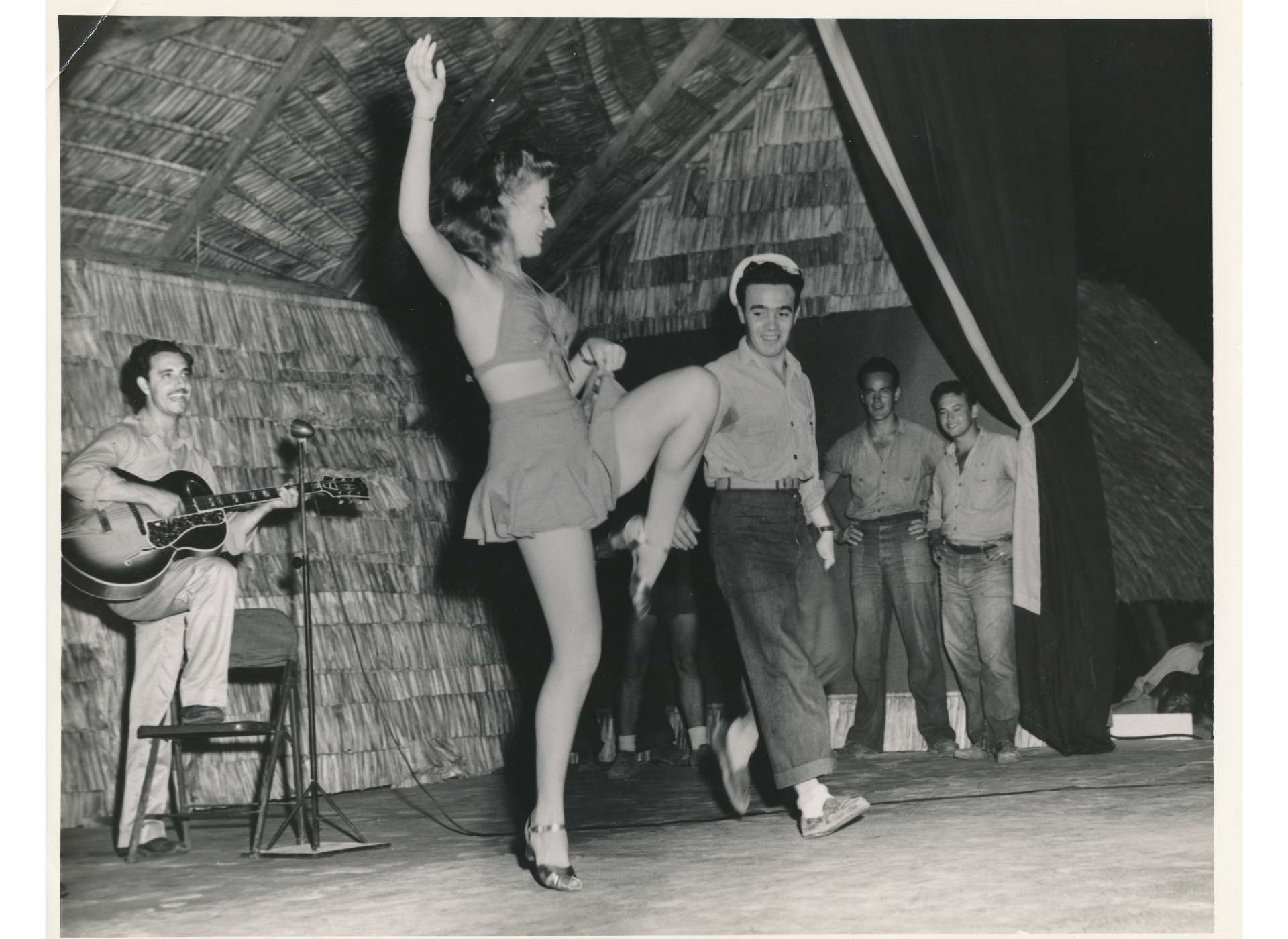
Follow the leader, Summer 1944
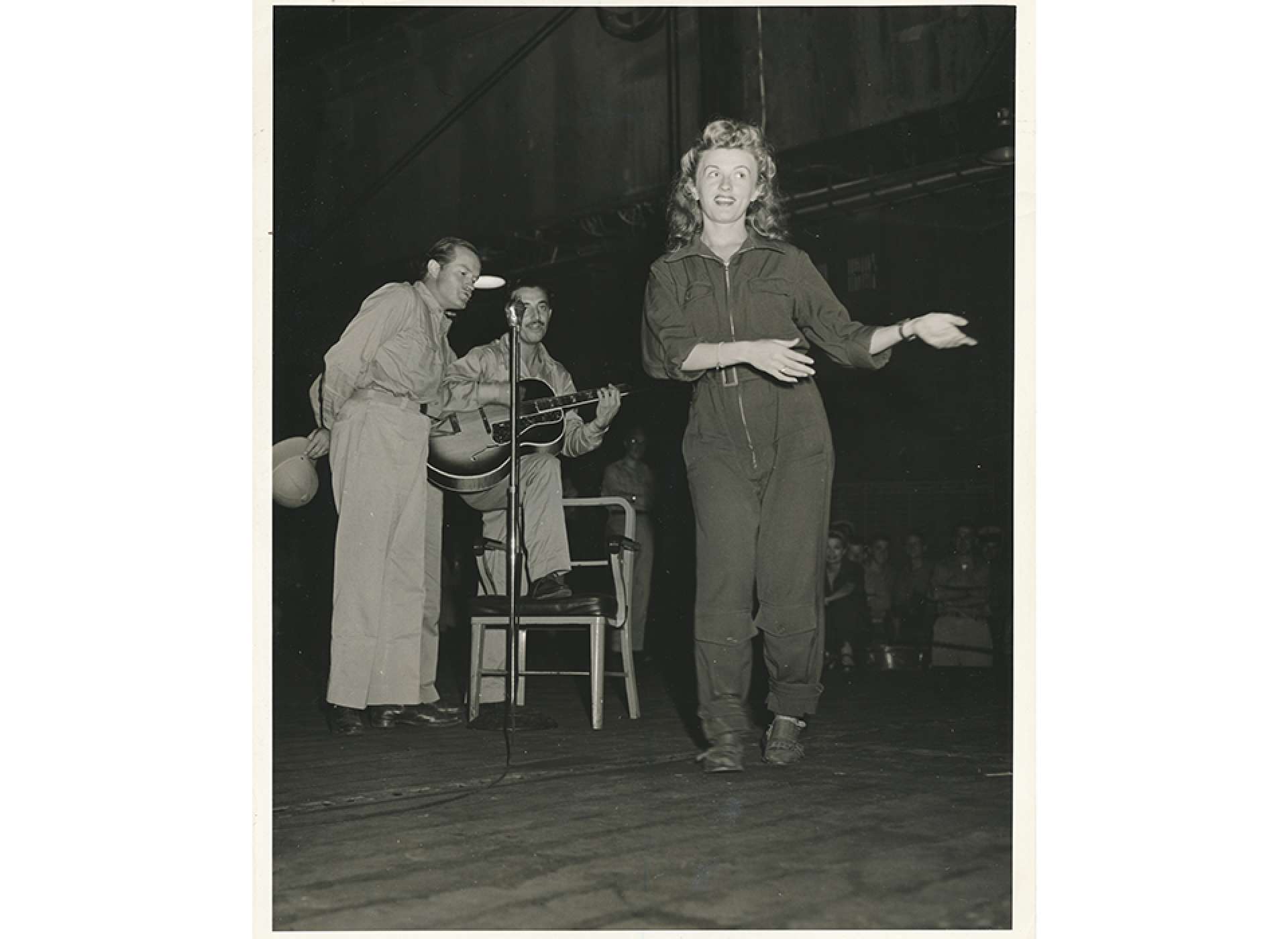
Aboard the USS Altamaha (ital Altamaha), Summer 1944
Thomas recalled thinking that all of these young men would be very disappointed if they couldn't hear her tap dancing. She later noted how naive she was, realizing that the appeal of a young, long-legged girl in a minimal dance costume perhaps outweighed the attention paid to her routine and execution of perfect, clean taps. Thomas was often called up onto the stage with Hope, who would say to the audience, “I just wanted you boys to see what you’re fighting for.” In those moments, she stood for all American women.
But her role wasn’t all about sexuality, and a central part of her performance was calling young servicemen up on stage to dance with her. She would ask them to mimic her movements and they would do exactly what she asked, often with hilarious results. Being able to act silly, act their age, and laugh at themselves was a tremendous release for many young serviceman. Looking back, Patty remembered "nothing was more fulfilling than seeing [them] smile.”
The tour came with hardships for the troupe as well. Both Hope and Thomas developed tropical ulcers, or "jungle rot,” also common among the soldiers. In Thomas’s case, it manifested in her ears and she even suffered hearing loss. But she noted:
“Once you've entertained these boys and you've made them happy, you know that you have to keep going until you just can't do it anymore."
Patty Thomas
Like on Hope’s previous tours, wartime travel for the group again proved risky. Lt. Frank Ferguson was the pilot who flew the troupe from New Caledonia to Australia. While flying along the Australian coast, one of the plane's engines died. On the descent, Ferguson gave the order to toss everything they didn’t need overboard. They tossed out luggage, souvenirs, even cases of Scotch. Thomas was so afraid they would throw out her tap shoes that she tied them around her neck. They made an unplanned, but safe, water landing in their PBY flying boat in Laurieton, Australia and the relieved troupe added some new tour stops for the locals there.
After World War II, Thomas continued to travel with Hope for decades. She admired him so much she would commit to traveling with him on a moment’s notice, and her suitcase was always packed. Thomas remained close to the Hopes and she and Frances Langford, her traveling buddy and roomie, remained lifelong friends. Thomas died at age 91 on March 29, 2014 in Newport Beach, California.

Kimberly Guise holds a BA in German and Judaic Studies from the University of Massachusetts Amherst. She also studied at the Universität Freiburg in Germany and holds a masters in Library and Information Science (MLIS) from Louisiana State University. Kim is fluent in German, reads Yiddish, and specializes in the American prisoner-of-war experience in World War II.
Explore Further
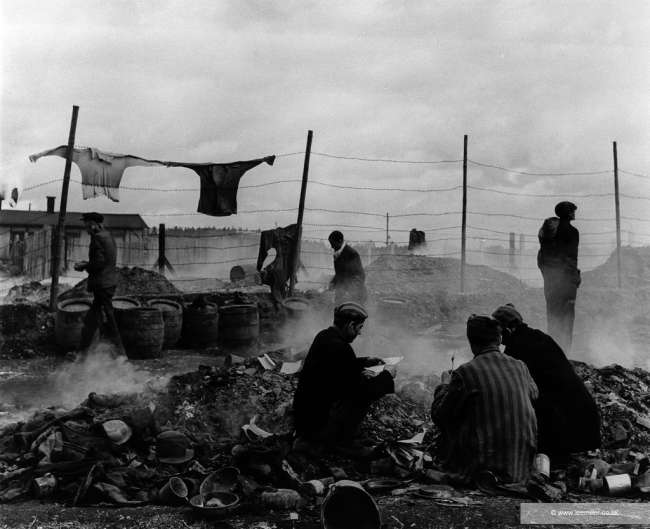
Lee Miller: Witness to the Concentration Camps and the Fall of the Third Reich
One of America’s only women war correspondents reports on the liberation of the concentration camps, Soviet and American troops meeting at Torgau, and Hitler’s burning villa in Berchtesgaden
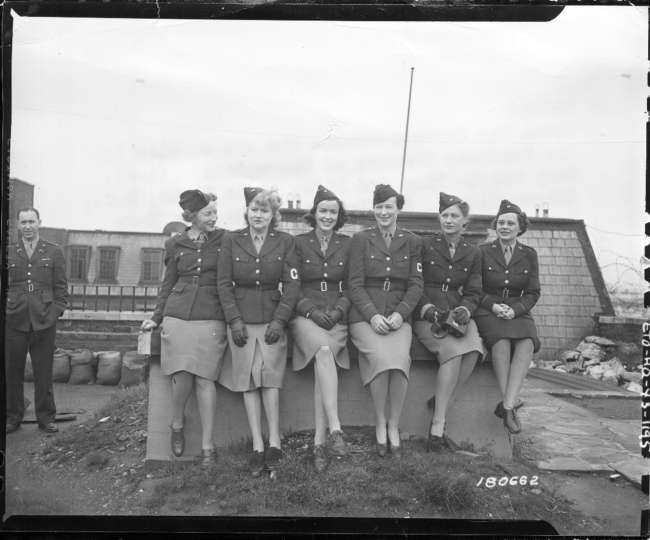
Lee Miller in Combat
One of America’s only female war correspondents reported on the aftermath of D-Day, the Battle of Saint-Malo, and the liberation of Paris.
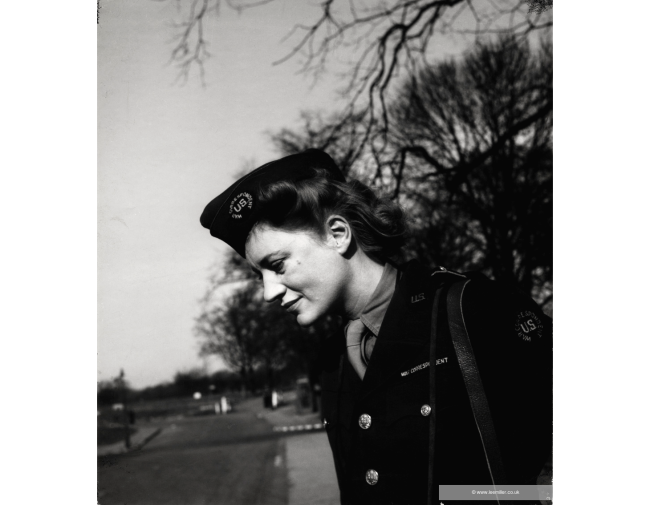
Lee Miller: Women at War
One of America’s only female war correspondents captured the war through women’s service.
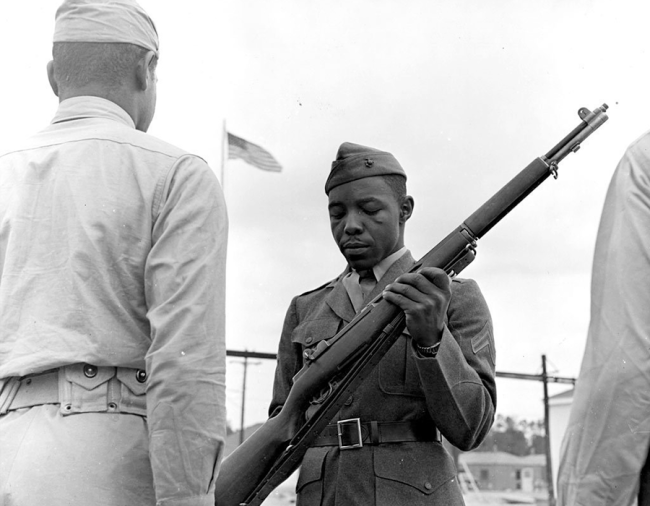
A Contested Legacy: The Men of Montford Point and the Good War
Despite their commendable service during World War II, the Marines of Montford Point would regularly contend with societal forces that vehemently resisted all measures taken toward racial integration.
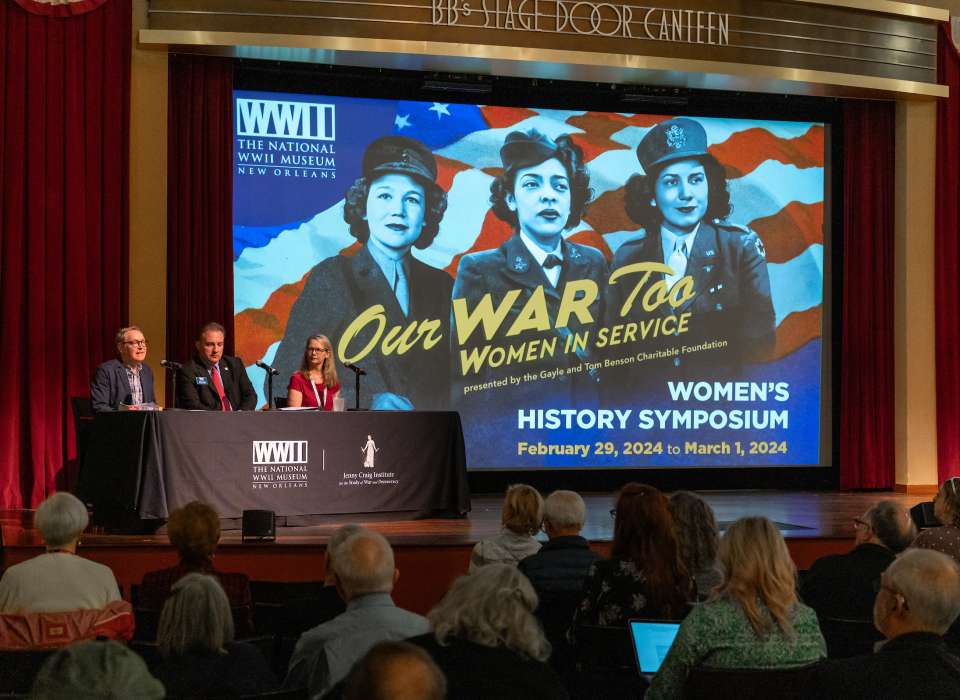
Our War Too: Women's History Symposium
The symposium, which took place from February 29 to March 1, 2024, featured topics expanding upon the Museum’s special exhibit, Our War Too: Women in Service .
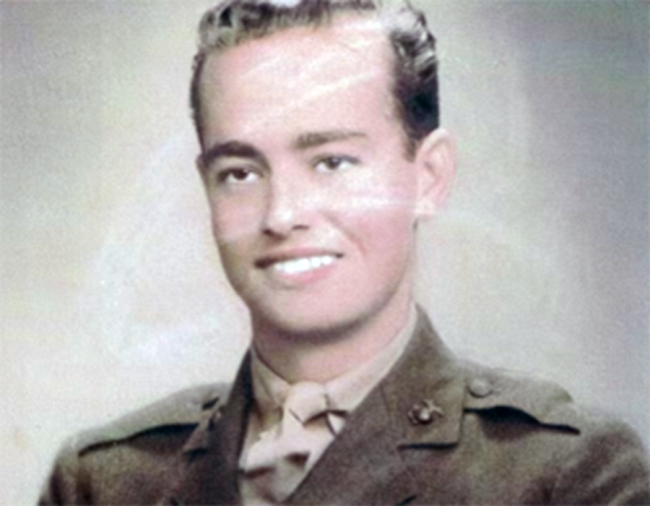
Unaccounted For No More: Sgt. Harold Hammett
WWII US Marine Corps Sergeant Harold Hammett, fallen on Tarawa in 1943, is finally laid to rest in the family plot after 80 years.

The Fallen Crew of the USS Arizona and Operation 85
The Operation 85 project aims to identify unknown servicemen who perished aboard the USS Arizona during the attack on Pearl Harbor.
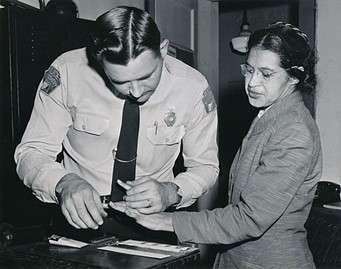
'Maxwell Opened My Eyes': Rosa Parks, WWII Defense Worker
Before her historic protest in the Montgomery Bus Boycott, Rosa Parks was a Home Front worker at Maxwell Airfield.
February 4, 2021
Culture , History , World War II
The USO Takes the Stage
When FDR thought that the troops needed a boost, the USO answered.
Troy Brownfield
- Share on Facebook (opens new window)
- Share on Twitter (opens new window)
- Share on Pinterest (opens new window)
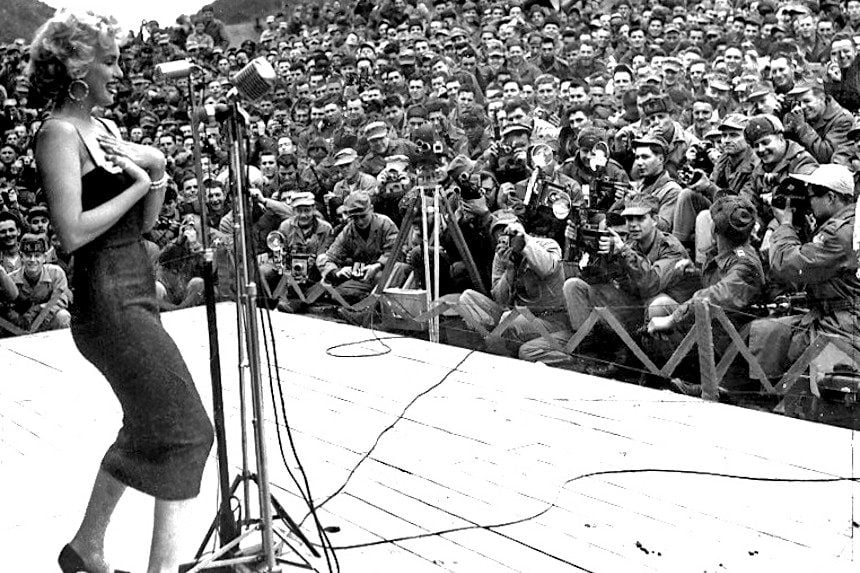
Weekly Newsletter
The best of The Saturday Evening Post in your inbox!
After the attack on Pearl Harbor on December 7, 1941, it seems like the entire United States mobilized in some way for the war effort. Men enlisted, women joined the workforce, and kids collected cans and their old comics for recycling and war bond drives. But months before the U.S. was pulled into the war, entertainers had already found a way to contribute with their talents; after President Franklin D. Roosevelt put out the call for moral support for American G.I.s, Mary Ingraham answered by founding the United Service Organizations, better known as the USO. For 80 years now, the USO has traveled around the world to entertain the troops, serving an estimated 35 million Americans in that time. Here’s how the show got started.
Mary Shotwell Ingraham graduated from Vassar College and was the president of Brooklyn’s YWCA for years. By 1940, she had moved up to the organization’s National Board. Upon Franklin’s request for services for the troops, Ingraham’s organization came together with five others (the YMCA, the National Jewish Welfare Board, the Salvation Army, the National Travelers Aid Association, and National Catholic Community Service) to establish the United Service Organizations. Roosevelt thought that the group could boost morale for the troops and also put together recreation activities for soldiers on leave. The USO was formally incorporated on February 4, 1941.
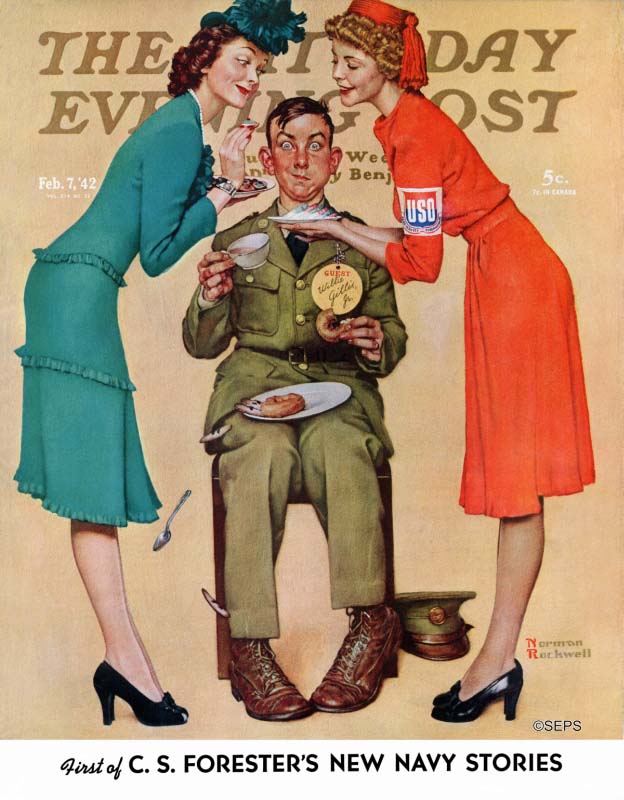
After the group was founded, USO centers proliferated across the country. The various locations hosted dances, movies, live music, and more. Free coffee and doughnuts for troops was a regular feature. However, the most common image conjured when one hears USO is that of the traveling shows that took big-name entertainers right to the men in uniform.
Subscribe and get unlimited access to our online magazine archive.
The USO Camp Shows kicked off in October of 1941, two months before American’s entry into World War II. The live events were basically variety shows that featured combinations of singers, comedians, actors, bands, and more. While local and volunteer talent might be found on the bill, stars of huge magnitude soon gravitated to the events. By November, Camp Shows took a stab at going outside the U.S. with a visit to troops in the Caribbean. As the war began and the calendar turned, over 180 theaters for military shows were operating the U.S.; by the end of 1942, 70 units of performers were making their way around a circuit that included North and South America, the United Kingdom, and Australia.
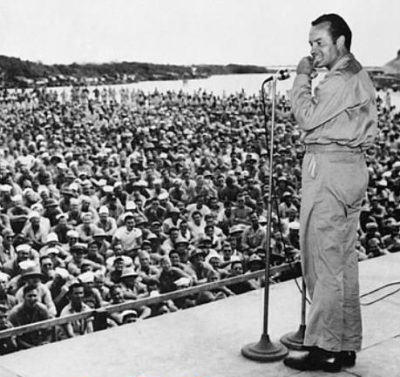
One of the entertainers who would become inextricably linked with the USO was Bob Hope. His first show for the group was in California on May 6, 1941. Hope would do 57 USO tours, including 48 Christmas shows, going out during every major conflict that the U.S. was involved with for the rest of the 20th Century, including World War II, the Korean War, the Vietnam War, the Lebanese Civil War, the Iran-Iraq War, and the Gulf War. Hope negotiated a deal with NBC and the network carried dozens of specials assembled from footage shot during his tours. Among the other big names that went out were Irving Berlin, Rita Hayworth, and Judy Garland. Shortly after D-Day, the USO sent entertainers to Normandy to entertain troops that had made the landing and secured the beaches.
Inside today’s USO Centers (Uploaded to YouTube by USO)
The USO continues today, and its legacy has taken a firm hold not only in daily lives of servicemen and women, but in the popular consciousness and culture of the United States. The Golden Globe and Emmy-winning series China Beach featured a USO entertainer played by Chloe Webb in its first season. For the Boys starred Bette Midler and followed 50 years in the life a performer that did USO tours. More recently, Captain America: The First Avenger had a subplot where Cap spent several months doing USO shows before he was allowed to undertake missions in the field.
Presently, the USO makes its headquarters in Arlington, Virginia, and lists more than 200 centers around the world. Classified as a 501(c)(3) non-profit, the organization has 300 paid staff and boasts more than 44,000 volunteers. In 2011, the USO was awarded the National Medal of Arts. The USO may not be an actual government agency, but for 80 years, it’s done an incalculable service for those who serve.
Featured image: Marilyn Monroe in Korea with the USO in 1954 ( U.S. Department of Defense photo via WikiMedia Commons; public domain)
Become a Saturday Evening Post member and enjoy unlimited access. Subscribe now
Recommended

Apr 09, 2024
Civil War , History
She Fought Nobly: Cathay Williams, the First Black Woman Soldier

Apr 08, 2024
Considering History , History , TV
Considering History: Lessons We Can Learn from the Quiz Show Scandals
Ben Railton
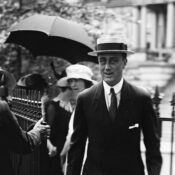
Apr 05, 2024
History , People
The Making of FDR
Jonathan Darman
I think I may have found the original photo from Marilyn Monroe South Korea tour with Joe DiMaggio I think I have the original picture black and white with the numbers on the back is s 119 please get back to me as soon as possible I need to know if it was stolen or if I have a great find and I’d like to sell it or give it back to him it belongs to thank you very much my name is Joshua santschi
I remember going to the USO when I was in the Army, Cold War era, and in NYC, and getting tickets for Broadway shows. Later was stationed at Thule, Greenland, defending the Air Force with our Nike missiles, missed Bob Hope, he had been there the year before.
Mr. Brownfield I know the USO had good intentions with the kind of variety shows you mentioned, including the big bands. I’ve always been disappointed in Bob Hope for his emphasis on the women you and then Bob mention in his comments. He must love them too or wouldn’t have mentioned them. It makes me uncomfortable that the service men didn’t have more wholesome entertainment like the big bands. I don’t care for Angie Dickinson. Johnny Carson would have her on his show frequently for no real reason at all. It’s never made sense to me. I think Bob Hope and Johnny Carson were both lecherous men and Angie loved the attention. She’d encourage their flirting with her laughter and flirting back. Shame on all of them for their shameful ways, but especially her. She could have declined their invitations but didn’t.
I’ve really learned a lot here about the USO and what a force of good it still is after 80 years. I’m glad it started in advance of America’s forced deep dive into World War II after Pearl Harbor. They had time to hone and refine what would become so crucial over the next 4 years, and in the wars since.
Morale and hope are so important especially for the men and women putting their lives on the line, every day. Who would have been better suited to make the guys laugh and give them some fun from home than Bob Hope? NO ONE! He knew exactly what to do, and did so up into his 90s IN the ’90s! The best of the best in show biz, too. From Rita Hayworth to Brooke Shields, Marilyn, Nancy Sinatra, Angie Dickinson, and so many more. Incredible!
I’ve just added the USO to my list of organizations to help in addition to the ASPCA, St. Jude’s and Operation Smile.
Your email address will not be published. Required fields are marked *

- Special Collections
- Modern Songs of War and Conflict
- Sheet Music
- Visual Narratives
- Sonic Narratives
- Further Research
- Bibliography
- Finding Aid
- Special Collections in Performing Arts
The United Service Organizations (USO)

The Second World War saw dramatic increases from the first in the number of voluntary enlistments (6 million up from 2) and in draftees ( 11.5 million up from 2.8). As with the first World War, most of these newly enlisted were in their teens and twenties when headed to the frontlines of the war. At The behest of President Franklin D. Roosevelt, the United Service Organizations were established in 1941 to boost morale among service members while abroad and on leave. An amalgam of a number of religious and public institutions, the USO quickly went to work raising private funds to establish centers throughout the U.S. and abroad. These centers generally offered recreational activities like music and film screenings as well as its early hallmark, coffe and donuts.
As the USO became more well established, the organization became synonymous with its Camp Shows , live staged variety acts including some of the most well known stars of film, radio, and music. During the years of U.S. involvement in WWII the U.S.O. put on over a quarter of a million performances in the United States and abroad, and became significant mediators of popular culture to enlistees and their families. Likewise, the U.S.O. was the largest institution through which popular entertainers that were not enlisted became a part of the war effort. Such was the case with singer, actress, and dancer Lena Horne, pictured above autographing a photo. Having made her film debut in 1943 starring in Stormy Weather Horne toured extensively through the USO donating her time and helping to propel her career at a time when segregation in the film industry threatened her career prospects. Throughout her time with the USO Horne performed domestically and made frequent appearances on Armed Service Radio Programs introducing many to her voice and music.
Jane Frohman, pictured right singing on an Armed Forces Network broadcast in 1943, had a similarly prolific tour with the USO albeit after she had become a well-established figure in popular music. Frohman rose to prominence after being featured in the 1933 renewal of the famed Ziegfield Follies Broadway review and by 1934 was one of the most popular singers in the country. Frohman performed extensively in Europe through the USO, although her life was almost claimed by a deadly air crash in Portugal. Even with permanately debilitating injuries, Frohman continued to tour extensively giving 95 concerts in 1945 alone.
As service members were surrounded by USO events overseas and domestically, the USO quickly became a fixture of American popular culture. During the war the USO's influence was such that the U.S. Army became concerned that the USO would dissuade potential enlistees as depictions of the USO centers in films were so lush that it made military service look spartan by comparison. The popularity of the USO and its camp shows reached the point that Irving Berlin was hired to produce a feature-length musical and film about entertainment's role in the war which became This Is The Army . The hugely successful production would go on to tour internationally non-stop until after the end of the war. The USO quickly became singularly influential in shaping the relationship between popular entertainment and the military, a relationship that would continue to the present day.

Photo Credits
Schomburg Center for Research in Black Culture, Photographs and Prints Division, The New York Public Library. "Lena Horne, African American actress, singer, and sponsor of the SS George Washington Carver, signing autographs for African American shipyard workers who helped build the ship, on the day of its launching, Richmond Shipyard No. 1" New York Public Library Digital Collections.
Billy Rose Theatre Division, The New York Public Library. "Jane Frohman in uniform facing microphone." New York Public Library Digital Collections.
Sources Cited
Andrews, Maxine (Maxene), and Bill Gilbert. Over Here, Over There: The Andrews Sisters and the USO Stars in World War II . New York: Kensington, 1993.
Feldstein, Ruth. How It Feels to Be Free: Black Women Entertainers and the Civil Rights Movement . Oxford: Oxford University Press, 2013.
Stone, Ilene. Jane Froman: Missouri’s First Lady of Song . Columbia: University of Missouri Press, 2003.
Modern Songs of War And Conflict takes a focused look at how popular music has been impacted by, responded to, and shaped American wars of the Twentieth Century. This exhibit is drawn from the Keesing Collection on Popular Music and Culture.
Funding for this project was generously provided by Hugo Keesing.
Exhibit Curator: Ben Jackson Curator for SCPA: Vincent Novara
With help from: Cindy Zhao, Alice Rogers, Meghan Creek, Hugo Keesing, and Susan Wiesner.
Special Collections in Performing Arts (SCPA) is located in the Michelle Smith Performing Arts Library on University of Maryland's College Park campus. We collect, serve, and preserve performing arts materials that document performance practice, instruction, and scholarship.
For more information about visiting SCPA and our collections, please contact us.
For more information about the Michelle Smith Performing Arts Library and our resources, please visit our website.
Stay Connected

- Moscow Tours
- Customized tours
- Moscow for kids
- Evening activities
- Moscow evening activities
- St Petersburg evening activities
- Day trips out of Moscow
- Golden Ring tours
- St Petersburg tours
- Russian tour destinations
- Package tours
- Moscow highlights
- Travel Tips
- Upcoming group tours
- Moscow events
The wonders of Moscow metro

Request form
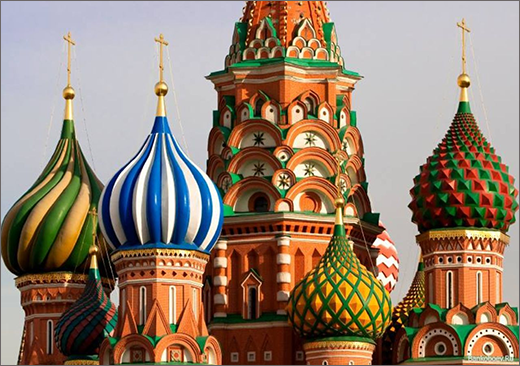
We use cookies to improve your experience on our website, and to facilitate providing you with services available through our website. By continuing to use our website, you accept our use of cookies, the terms of our Privacy Policy and Terms of Service . I agree
War Memorial Noginsk
- Second World War (1939-1945)
- Russia Moskovskaja oblast Noginsk
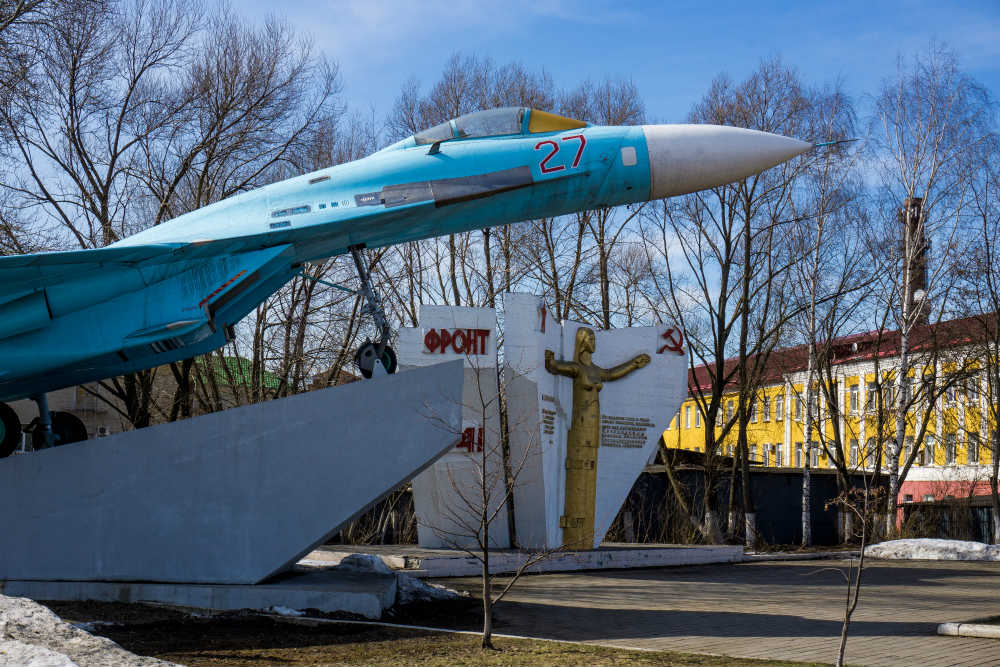
This memorial in the district Glukhovo in Noginsk was erected in 1985 on the 40th anniversary of the victory in Second World war. The author of the monument is P.V. Peretinkin. The monument is dedicated to the natives of the district Glukhovo worked on the factories or fought on the fronts of the great Patriotic war. On 4 November 2015 the military fighter SU-27 was placed next to the monument. The inscription on the pedestal under Su-27 is: "To the native city from academician V. E. Fortov, 70 years of the great Victory in 2015".
Do you have more information about this location? Inform us!
- Text: Fyodor Telin
- Photos: Fyodor Telin
Where is it?
Helaas geen map gevonden.
55.875735, 38.465646

Looking for reliable information or news facts about WW2? Do you want to create your own battlefield tour to sights of wars from the past? Or are you interested in war medals and their recipients? TracesOfWar.com tells you more!
More information
- About us / FAQ
- Contributors
© STIWOT , 1999-2024. All rights reserved. Privacy statement, cookies, disclaimer and copyright
1st Special Air Defence Corps
1-й Особый корпус ПВО
Military Unit: 52096
Commanders:
- Major-General Porfiriy Konstantinovich Skornyakov, 1953 - 1954
- Major-General Nikolay Fedorovich Mikhaylov, 1954 - 1958
- Major-General Nikolay Grigorevich Filatov, 1958 - 1958
- Major-General Stepan Filippovich Vikhor, 1958 - 1960
- Major-General Mikhail Ivanovich Vasilev, 1960 - 1962
- Major-General Boris Aleksandrovich Korolev, 1962 - 1965
- Major-General Vladimir Grigorevich Malomuzh, 1965 - 1966
- Major-General Andrey Fedorovich Vuraki, 1966 - 1970
- Lieutenant-General Gleb Nikolaevich Tkachenko, 1970 - 1980
- Major-General Nikolay Andreevich Shatalov, 1980 - 1985
- Lieutenant-General Arkadiy Pavlovich Danilevich, 1985 - 1988
- Major-General Vladimir Ivanovich Vereskov, 1988 - 1992
- Major-General Leonid Vladimirovich Serebryakov, 1992 - 2001
- Major-General Valeriy Illarionovich Kotelnikov, 2001 - 2004
- Major-General Anatoliy Borisovich Alisov, 2004 - 2009
- Colonel Eduard Semenovich Sigalov, 2009 - 2011
- Colonel Konstantin Aleksandrovich Ogienko, 2011 - today
Activated 13.6.53 in Vidnoye, Moscow Oblast, as the Administration 2nd Sector.
1.12.53 renamed 1st Special Air Defence Corps.
Organisation 1960:
- 673rd Anti-Aircraft Missile Regiment (Shcherbovo, Moscow Oblast)
- 635th Anti-Aircraft Missile Regiment (Stepanshchino, Moscow Oblast)
- 709th Anti-Aircraft Missile Regiment (Bessonovo, Moscow Oblast)
- 783rd Anti-Aircraft Missile Regiment (Bereznetsovo, Moscow Oblast)
- 628th Anti-Aircraft Missile Regiment (Torbeevo, Moscow Oblast)
- 717th Anti-Aircraft Missile Regiment (Semyonovskoye, Moscow Oblast)
- 651st Anti-Aircraft Missile Regiment (Fenino, Moscow Oblast)
- 705th Anti-Aircraft Missile Regiment (Nizhnee Shakhlovo, Moscow Oblast)
- 728th Anti-Aircraft Missile Regiment (Kurilovo, Moscow Oblast)
- 597th Anti-Aircraft Missile Regiment (Britovo, Moscow Oblast)
- 614th Anti-Aircraft Missile Regiment (Pestovo, Moscow Oblast)
- 569th Anti-Aircraft Missile Regiment (Dolmatovo, Moscow Oblast)
- 561st Anti-Aircraft Missile Regiment (Ivino, Moscow Oblast)
- 549th Anti-Aircraft Missile Regiment (Klenovo, Moscow Oblast)
- 499th independent Communications Battalion (Vidnoye, Moscow Oblast)
- 217th Radio-Technical Center (Vidnoye, Moscow Oblast)
Organisation 1970:
- 1486th Technical Base (Tolbino, Moscow Oblast) - military unit: 30574 - 55 19 33N, 37 27 31E
- 225th Technical Base (Belye Stolby, Moscow Oblast) - military unit: 11282 - 55 19 24N, 37 53 23E
Organisation 1980:
- 217th Radio-Technical Center (Kashira, Moscow Oblast)
1.6.88 renamed 86th Air Defence Division .
Organisation 1988:
- 16th Anti-Aircraft Missile Regiment (Fenino, Moscow Oblast)
- 9th Radio-Technical Regiment (Kashira, Moscow Oblast)
1.10.94 renamed 86th Air Defence Brigade .
1.10.95 renamed 86th Air Defence Division .
Organisation 1995:
- 16th Anti-Aircraft Missile Regiment (Fenino, Moscow Oblast) - military unit: 31500
- 549th Anti-Aircraft Missile Regiment (Kurilovo, Moscow Oblast) - military unit: 61991
- 614th Anti-Aircraft Missile Regiment (Pestovo, Moscow Oblast) - military unit: 92574
- 635th Anti-Aircraft Missile Regiment (Stepanischevo, Moscow Oblast) - military unit: 86646
- 705th Anti-Aircraft Missile Regiment (Verkhnee Shakhlovo, Moscow Oblast) - military unit: 71476
- 9th Radio-Technical Regiment (Kashira, Moscow Oblast) - military unit: 51858
- 9th independent Radar Company (Vysokinichi, Moscow Oblast) - military unit: 31499
- 1052nd independent Radar Company (Dolmatovo, Moscow Oblast) - military unit: 31499
- 1057th independent Radar Company (Petrovskoye, Moscow Oblast) - military unit: 31499
- 1070th independent Radar Company (Matyra, Moscow Oblast) - military unit: 31499
- 1253rd independent Radar Company (Dmitrievskoye, Tula Oblast) - military unit: 31499
- 499th independent Communications Battalion (Petrovskoye, Moscow Oblast) - military unit: 31788
1.5.98 renamed 96th Air Defence Brigade .
1.6.01 renamed 9th Air Defence Division .
2009 renamed 5th Aerospace Defence Brigade .
1.12.2014 renamed 5th Aerospace Defence Division .
Organisation 2015:
- 606th Guards Anti-Aircraft Missile Regiment (Elektrostal, Moscow Oblast)
- 549th Anti-Aircraft Missile Regiment (Ilinskoye, Moscow Oblast)
- 614th Guards Anti-Aircraft Missile Regiment (Pestovo, Moscow Oblast)
- 629th Guards Anti-Aircraft Missile Regiment (Kablukovo, Moscow Oblast)
- 799th Anti-Aircraft Missile Regiment (Krasnoznamensk, Moscow Oblast)
- 9th Radio-Technical Regiment (Olkhovka, Moscow Oblast)
- Vidnoye, Moscow Oblast, 1953 - today [55 32 28N, 37 47 00E]
Subordination:
- 1st Air Defence Army for Special Use , 12.53 - 1.12.94
- 1st Air Defence Corps , 1.12.94 - today

IMAGES
COMMENTS
USO Camp Shows, Inc., a subsidiary of the USO, was tasked with providing live entertainment to troops during World War II. From the moment the U.S. entered the war — to D-Day, VE Day and beyond — USO performers gave over 420,000 performances for 130+ million service member attendees. ... [USO tour] was to North Africa and Italy, where she ...
The 1969 "Around the World with the U.S.O." tour was the most ambitious of Hope's career, with performances in Germany, Turkey, Thailand, Korea, and Vietnam. The first performance of the tour was for President Richard M. Nixon and guests at the White House. Enlarge.
The Creation of the USO. The USO was officially created on February 4, 1941, with one of the first centers opening on May 28 at the Charleston Navy Yard. During the war, almost every town in the United States set up a USO center—there were more than 3,000 in all, staffed by 1.5 million volunteers. They provided soldiers a place to eat, write ...
So Ready for Laughter explores Hope's major USO tours and travels during World War II through some 50 artifacts, including rare and unpublished photographs of Hope; a World War II-era aircraft fragment, mess kit, and other relics engraved to Hope; videos of his traveling, wartime troupe; and Hollywood Victory Caravan programs and scrapbooks ...
The United Service Organizations Inc. (USO) is an American nonprofit-charitable corporation that provides live entertainment, such as comedians, actors and musicians, social facilities, and other programs to members of the United States Armed Forces and their families. Since 1941, it has worked in partnership with the Department of War, and later with the Department of Defense (DoD), relying ...
USO Tours and War Effort. Andre Kostelanetz felt a strong need to contribute to the American war effort during World War II. As he wrote in Echoes: "To the question, what should my contribution to the war effort be, the answer was obvious: make as much music as I could in as many places and as often as possible."(p. 98)
By Legacy Staff May 26, 2013. 1. Bob Hope headlined 57 USO tours, bringing laughter to the lives of U.S. military men and women. Comedian Bob Hope (1903 - 2003) was one of the best known, most ...
Courtesy of NARA, 111-SC-347375, NAID 176250386. The USO's Camp Shows program dispatched live entertainment to military camps in the United States and to all of the war's theaters. More than seven thousand performers staged over 428,000 shows throughout the war and immediate postwar years, many of them traveling abroad on what the USO ...
From July 10-August 31, 1944, the group embarked on an epic USO Camp Shows tour of the Pacific Islands to entertain American servicemen and women. The group staged around 150 shows in the two months they were on the road. Patty Thomas was by far the youngest member of the ensemble. ... After World War II, Thomas continued to travel with Hope ...
Hope would do 57 USO tours, including 48 Christmas shows, going out during every major conflict that the U.S. was involved with for the rest of the 20th Century, including World War II, the Korean War, the Vietnam War, the Lebanese Civil War, the Iran-Iraq War, and the Gulf War. Hope negotiated a deal with NBC and the network carried dozens of ...
The hugely successful production would go on to tour internationally non-stop until after the end of the war. The USO quickly became singularly influential in shaping the relationship between popular entertainment and the military, a relationship that would continue to the present day. Jane Frohman singing in uniform, ca. 1944.
Happy birthday, USO!The organization best known for entertaining our troops around the globe turns 80 in 2021, this month, in fact. Just prior to America's involvement in World War II in 1941 ...
What happened in Mayakovskaya station during WWII? Where is Metro II, the secret metro system constructed specially for the Soviet government? Meeting time: 11 am Meeting place: TBA Tour duration: about 2 hours Tour cost: 1000 RUB per person (metro fare is not included) Request form. Your name * Your family name * E-mail * Phone number * Number ...
This memorial in the district Glukhovo in Noginsk was erected in 1985 on the 40th anniversary of the victory in Second World war. The author of the monument is P.V. Peretinkin.
1st Special Air Defence Corps. 1-й Особый корпус ПВО. Military Unit: 52096. Commanders: Major-General Porfiriy Konstantinovich Skornyakov, 1953 - 1954. Major-General Nikolay Fedorovich Mikhaylov, 1954 - 1958. Major-General Nikolay Grigorevich Filatov, 1958 - 1958. Major-General Stepan Filippovich Vikhor, 1958 - 1960.
As World War II in Europe ended, the German nuclear scientists, handicapped by insufficient coordination and paltry official backing, were nevertheless only just short of achieving a self-sustaining chain reaction in a heavy-water-moderated pile. They had elaborated most aspects of reactor theory; they knew the best arrangement for the